Feed aggregator
This Kingdom Is Up for Preorder

Tor released This Kingdom for preorder and did not warn us. We found out 30 minutes ago, and Mod R tells me that the links are already up in Discord and fan groups. BDH: zero chill.
Zero.
The EBOOK is up everywhere.
The PRINT EDITION is up at other places but not up on Amazon US because Amazon US only allows hardcover preorders in 300 day window before release. Oher country Amazons already have it (UK, Canada, Germany etc). It should be up everywhere some time in the summer. We will remind you again when we have the cover. THERE WILL BE A PRINT EDITION.
The AUDIO is not up anywhere except BN because it has not been recorded yet. The book is still being copyedited. THERE WILL BE AN AUDIO EDITION.
If you are ordering from BN: Members Save 25% Off Pre-Orders With Code: PREORDER25.


 BOOKSHOP
BOOKSHOP
Synopsis, once again:
Outlander meets Game of Thrones in this blockbuster new epic fantasy series from the #1 New York Times bestselling author duo Ilona Andrews.
When Maggie wakes up cold, filthy, and naked in a gutter, it doesn’t take her long to recognize Kair Toren, a city she knows intimately from the pages of the famously unfinished dark fantasy series she’s been obsessively reading and re-reading while waiting years for the final novel.
Her only tools for navigating this gritty world of rival warlords, magic, and mayhem? Her encyclopedic knowledge of the plot, the setting, and the characters’ ambitions and fates. But while she quickly discovers she cannot be killed (though many will try!), the same cannot be said for the living, breathing characters she’s coming to love—a motley band that includes a former lady’s maid, a deadly assassin, various outrageous magical creatures, and a dangerously appealing soldier. Soon, instead of trying to get home, she finds herself enmeshed in the schemes—and attentions—of dueling princes, dukes, and villains, all while trying to save them and the kingdom of Rellas from the way she knows their stories will end: in a cataclysmic war.
For fans of Samantha Shannon, Danielle L. Jensen, Sarah J. Maas, and isekai and portal fantasy, This Kingdom Will Not Kill Me is the beginning of the most epic adventure yet from genre powerhouse author duo Ilona Andrews.
At the Publisher’s request, this title is being sold without Digital Rights Management Software (DRM) applied.
Also, different retailers are showing different page count. Nobody has the manuscript yet. These are placeholder page numbers.
The post This Kingdom Is Up for Preorder first appeared on ILONA ANDREWS.
Women in SF&F Month: Mia Tsai
Today’s Women in SF&F Month guest is Mia Tsai! Her debut novel, Bitter Medicine, is a xianxia-inspired contemporary fantasy book featuring a magical calligrapher descended from the Chinese god of medicine and a half-elf security expert working at the same agency. The Memory Hunters, her second novel coming out on July 29, is the first book in a science fantasy duology featuring an archaeologist and her protector that is described as a “mind-bending queer adventure for fans of Inception, Arkady […]
The post Women in SF&F Month: Mia Tsai first appeared on Fantasy Cafe.The Eccentric’s Bookshelf: Michael Weldon’s Psychotronic Encyclopedia of Film
1983? Let me tell you how it was.
In a World Without the Internet, before Youtube, before Netflix, before Prime, before 4K UHD smart TVs, before social media or Substack or niche newsletters, before IMDb and Rotten Tomatoes, before DVDs and Blu-rays, even before blogs (gasp!), you would find yourself sitting around late at night, channel surfing, listlessly flipping through TV Guide, restlessly looking for something to watch, and you would come across a movie like The Horror of Party Beach and you would think, “What the hell? Is this worth ninety minutes of my life?” And since you would likely have only once chance to see the thing, it was a decision fraught with import. (I’ve always wanted to use that phrase.)
In the absence of all of the resources and options we now take for granted, how did you decide what to do? I’ll tell you what I did — I reached for The Psychotronic Encyclopedia of Film.
The brainchild of Uber-Geek Michael Weldon and an offshoot of his Psychotronic Video magazine, the book is, according to the back cover, “The complete viewer’s guide to the weirdest movies of all time!” It’s a boast that the volume makes good on with one pseudopod tied behind its back.
The back cover also sports an important disclaimer:
WARNING! The author of this book has been watching these movies obsessively since the age of 6. He is now unfit for conventional employment. Because of the addictive nature of these films, we the publishers cannot guarantee that your sanity won’t be endangered by reading this book.
Just what is a “psychotronic” movie? Well, it’s a broad category covering all manner of films, from horror and science fiction to juvenile delinquent dramas to women behind bars sleaze to sword-and-sandal epics; in other words, low-budget exploitation movies generally, with some exceptions for big-budget productions with low-budget souls. To again quote the back cover (and let me tell you, it’s one of the greatest back covers of all time — and the front cover is no slouch, either),
From the slightly offbeat to the outlandishly bizarre… from the no-budget quickie to the multimillion-dollar box-office smash… PSYCHOTRONIC films range from Attack of the Killer Tomatoes to E.T…. from Angel’s Wild Women and Hellcats of the Navy to I Dismember Mama and Let Me Die a Woman… from sincere social commentary to utter trash. PSYCHOTRONIC stars are ex-models, ex-sports heroes, dead rock idols, future presidents, would-be Marilyns, and has-beens of all types.
Once you manage to get past the cover — no easy task — the book consists of over 3,000 punchy reviews of psychotronic movies (most written by Weldon himself), seasoned with tons of great photographs: movie posters, lobby cards, publicity stills, and images from the actual films adorn almost every page.
It was a great day when I bought my first copy of The Psychotronic Encyclopedia. (I’ve gone through several over the years, and when I wear one out, I give it to a prospective acolyte; I aim to earn my way into psychotronic heaven by actively proselytizing. These days if you want a copy your best bet is eBay, where you can also find copies of Psychotronic Magazine.)
In the bad old days, it was extremely hard to find out about these films, and a surprising number of people — some of them capable of speaking in complete sentences and holding down real jobs, believe it or not — wanted precisely the kind of information that only The Psychotronic Encyclopedia could provide.
But don’t take my word for it. Let card-carrying Respectable Citizen and certified Hero of the Mainstream Literary Establishment Colson Whitehead, who won the National Book Award and the Pulitzer Prize for his novel The Underground Railroad and who also penned the zombie apocalypse saga Zone One, vouch for the value of the psychotronic worldview. Whitehead declared that
Weldon’s book was proof that even the most unlikely idea had a chance. If these movies existed, then surely whatever measly story was bubbling in my brain was not so preposterous. The psychotronic movie’s disregard for mimesis, its sociopathic understanding of human interaction, its indifferent acting, and its laughable sets were a kind of ritualized mediocrity. The filmmakers were so inept in their portrayal of any kind of recognizable reality that their creations became a form of grubby science fiction, documentaries about an alternative planet.
Bull’s-eye. Disreputable, shocking, embarrassing, tasteless, tacky, trashy, revolting, hilarious (intentionally or, more commonly, unintentionally), utterly free from the constraints of competence and good manners imposed on “serious” filmmakers, offhandedly subverting every decent value (often including that of minimal coherence), psychotronic films are rebellion made flesh — or celluloid. Just watching one feels like striking a blow for liberty, and Michael Weldon’s book is a revolutionary manifesto more radical than anything ever tossed off by Marx and Engels. (Just imagine what that pair of stuffy Germans would have made of Hot Rods to Hell or Robot Monster!)
Of course, because the book was published in 1983, it also an artifact from A World Without any Movie Made over the Last Forty Years — no Repo Man, no Silence of the Lambs, no Dark City, no Revenge of the Sith (ok, not having that movie might be a feature rather than a bug), no Shaun of the Dead, no Independence Day.
This admittedly limits the Psychotronic’s utility somewhat, but I still find myself thumbing through its well-worn pages with embarrassing frequency. Sometimes you just have to know who starred with Bela Lugosi in The Devil Bat or what year Roger Corman made Ski Troop Attack, and it’s one of those books that’s truly like a bag of potato chips — you can’t read just one entry. Before you know it, you’ve blown an hour seeing if Weldon did justice to Count Yorga, Vampire or The Mole People, gaining new insight into Werewolf in a Girl’s Dormitory or Whatever Happened to Baby Jane, and admiring photographs of Chubby Checker, Jayne Mansfield, and Vincent Price (not from the same movie, unfortunately — some things will never happen this side of paradise).
Anyway, if the years 1984 to 1995 are all that important to you (I can barely remember them, myself) Weldon produced a second volume called The Psychotronic Video Guide in 1996. But while the original Psychotronic Encyclopedia still lives right under my wide-screen TV where I can lay hands on it at a moment’s notice, I found that I never used the Psychotronic Video Guide that much.
Maybe that’s because by 1996 we were on the cusp of a change the magnitude of which we couldn’t even begin to imagine, and the old world of B-movie, cult movie, low-budget, late-night old movie TV was about to vanish forever, or at least be transformed almost beyond recognition. Today if you want to investigate The Horror of Party Beach, you can watch it any hour of the day or night on Youtube (at least as of last weekend — as you know, the streaming world is as inconstant as our nation’s trade policy) and there are countless people on that same platform who do nothing but yammer endlessly about these kinds of movies.
It’s great, in its way, but sometimes I miss the old days when opportunities were fleeting and consequently the choices seemed more important; hell, I even miss the used car commercials.
So, what did I do about that non-hit of 1964, The Horror of Party Beach, when I came across it all those years ago? Did I sacrifice an hour and a half of the only life I’ll ever have to watch such a manifest piece of junk? Such a momentous decision would paralyze most people, but I consulted the Psychotronic Encyclopedia, and on page 331 I was told,
Forget anemic teen horror movies like Ghost in the Invisible Bikini. This low-budget gem from Stamford, Connecticut, features kids on the beach dancing to “The Zombie Stomp” and a girl who drinks hard liquor and strips for bikers. Meanwhile radioactive waste turns human skulls on the bottom of the ocean into horrible monsters! They kill the wayward girl on the beach, then all the girls at a slumber party. If you don’t understand what’s happening, newspaper headlines (MONSTERS STRIKE!, MONSTERS STRIKE AGAIN!, and MASS MURDER AT SLUMBER PARTY!) are shown to keep you informed. With great music by the Del-Aires, lame jokes, phony blood, a sportscar driven through New York City, and a maid named Eulabelle who saves the day by knocking a beaker of sodium on a living monster hand, which promptly disintegrates. Billed as “the first horror monster musical!” it’s a cool classic that was also turned into a photo comic book. EXTRA! EXTRA! FIVE MORE KILLED BY MONSTERS!
Did I watch The Horror of Party Beach?
Don’t ask stupid questions.
Thomas Parker is a native Southern Californian and a lifelong science fiction, fantasy, and mystery fan. When not corrupting the next generation as a fourth grade teacher, he collects Roger Corman movies, Silver Age comic books, Ace doubles, and despairing looks from his wife. His last article for us was Movie of the Week Madness: Duel
7 Author Shoutouts | Authors We Love To Recommend
Here are 7 Author Shoutouts for this week. Find your favorite author or discover an…
The post 7 Author Shoutouts | Authors We Love To Recommend appeared first on LitStack.
Phantasma - Book Review
 Phantasma (Wicked Games #1)by Kaylie Smith
Phantasma (Wicked Games #1)by Kaylie SmithWhat is it about:When Ophelia and her sister discovers their mother brutally murdered, there is no time to grieve: Ophelia has inherited both her powerful death-driven magic and enormous debt on their home. Circumstances go from dire to deadly, however, when Ophelia’s sister decides to pay off the loan by entering Phantasma—a competition where most contestants don’t make it out alive and the winner is granted a single wish.
The only way to save her sister is to compete. But Phantasma is a cursed manor, with twisting corridors and lavish ballrooms, and filled with enticing demons and fatal temptations. Ophelia will need to face nine floors of challenges to win... if her fears don’t overtake her first.
When a charming, arrogant stranger claims he can protect and guide Ophelia, she knows she shouldn’t trust him. While Blackwell may not seem dangerous, appearances can be deceptive. But with her sister’s life on the line, Ophelia can’t afford to turn him away. She just needs to ignore the overwhelming, dark attraction drawing them closer and closer together.
Because in Phantasma, the only thing deadlier than losing the game is losing your heart.
What did I think of it:Ever since Battle Royale (Yes, long before The Hunger Games) I've had a soft spot for stories where people have to take part in dangerous/deadly games. It's almost as good as some decent zombie mayhem. So even though I suspected it might be more romance than action I got my trotters on this book. When I finally picked it up to read for an online book club, Voodoo Bride decided to read along.
And we both had a great time with this book!
I will say I really liked Ophelia, which surprised me as she's (once again) an older sister thinking she needs to save her younger sister. But where I usually dislike those meddling older siblings who think they know better Ophelia surprised me. She doesn't think she's better. Far from it in fact, she feels like a failure, has her inner demons, and feels like she is at fault for her younger sister disappearing, hence why she enters Phantasma to find her sister.
Then there's the whole game element which was really cool and exciting. There are scheming contestants, thrilling tests, death, creepy and icky stuff, hauntings, you name it. The whole of Phantasma was really well thought out, and had me engrossed, eager to find out what would be thrown at Ophelia next.
The romance was also excellent (and super delicious according to Voodoo Bride) and we rooted for Ophelia to win both Phantasma and at love. Blackwell was a very cool character (and dreamy and yummy) who clearly has his own agenda, still we rooted for him as well.(We could easily guess what his deal was, but if a story is as well written as this was, that doesn't really matter.)
Overall a really awesome read. We will most definitely get book two as well.
Why should you read it:It has it all: action, romance, thrills, & mayhem.
A Boy and His Dog: How Archaeology is My Biggest Inspiration
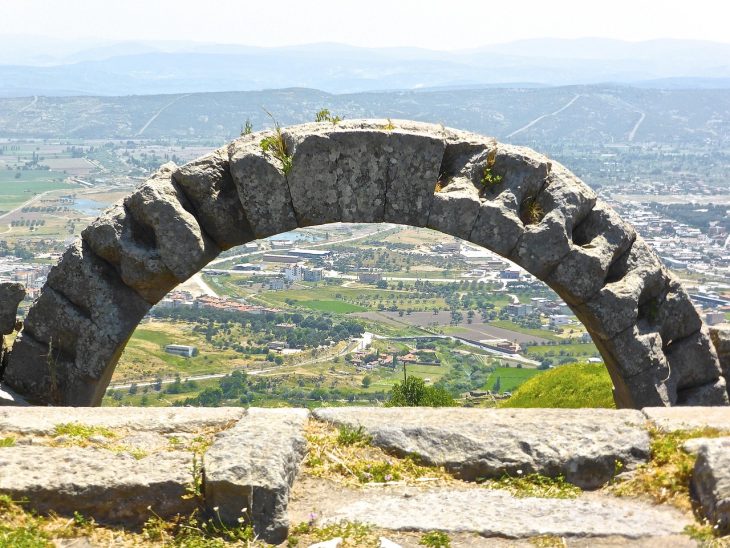 Image by Siggy Nowak from Pixabay. This looks like a Stargate. Where’s the dial?
Image by Siggy Nowak from Pixabay. This looks like a Stargate. Where’s the dial?
Good afterevenmorn, Readers!
Once upon a time, a much younger me fell into an obsession… Well, several related obsessions, if I’m being honest. Prehistoric Anthropology and Archaeology dug its claws into my brain and would not let go. In what might have been a profound waste of money, I followed that obsession into university, acquiring a Bachelor’s Honours Degree in the subject, with a focus on Celtic Studies. I wrote a thesis that was four times as long as it needed to be (with permission). I wrote on the Continuity of Religious Iconography From the Upper Palaeolithic to the Pre-Roman Iron Age of the Atlantic Façade. Which is to say, basically, some religious beliefs and practices of the Iron Age Celts might just have had their origin in the pre-Celtic peoples of the Stone Age. That’s a lot to cover in just twenty pages, so I handed in eighty-three.
When I say I was/am obsessed, I absolutely meant it.
 Image by WikiImages from Pixabay
Image by WikiImages from Pixabay
I had wanted to follow that obsession even further in a Master’s Degree and then onto a Doctorate, but I had no money, and was far too scared of my already accrued debt to willingly go further. As such, I’m not really working in my field of study. In fact, I’m nowhere near it. My day job is working as an accounting clerk. But that doesn’t mean I haven’t used my degree. I have. Sort of.
You can find me still pouring over news from the prehistoric anthropology and archaeology world. The information sits in my head and ferments, becoming part of the fabric of my imagination. Every so often, that information pops out in the form of a fictional story. Sometimes, there are things that are discovered after a story is written and out in the world that reflect the stories so very well. Let’s explore!
 Image by Joshua Choate from Pixabay
A Child and Their Dog
Image by Joshua Choate from Pixabay
A Child and Their Dog
In 1994, Jean-Marie Chauvet discovered a cave in southern France later named for them (Chauvet-Pont-d’Arc). Inside, undisturbed, thanks in large part of a landslide that sealed off the cave, were tracks, cave art and animal figurines dating back to the palaeolithic. Of particular note were the fossilised footprints of an eight-year-old child dating back some 26,000 years. The child was barefoot and walking, making the tracks beside his remarkable. These were the tracks of a very large canine. Possibly a wolf. The child was not running, so there wasn’t any kind of pursuit. This discovery has led to some interpretations that this child and the large canine were quite possibly travel companions.
In 2010, I published a collection of short-stories all designed to be quite like fairytales or origin myths. Included in this anthology – The Dying God & Other Stories – was the story The Taming of Man I. In this tale, a young orphan boy is adopted by the ancestor of the Black Hounds; a giant, wolf-like dog named Cysgod Mawr (literally: The Great Hound). They travel together, away from the volcano responsible for the death of the boy’s parents and Cysgod Mawr’s pups both. It is the mythological telling of how wolves came to be domesticated.

This is an example of something that was discovered long after a story was written that just fits with the story so very well. In 2017, I was lucky enough to have a historical fiction published by Renaissance Press. Set in Roman occupied Britain and Gaul, Daughters of Britain follows the eldest of Boudicca’s daughters. Boudicca, incidentally, in one of my favourite historical figures. If you want to hear me rant at length, just mention her. I will not shut up. I know that not everyone has heard of her, but in short, Boudicca was the queen of a powerful Celtic tribe in the south east of Britain called the Iceni or Magni Ceni. The long and short of it is that Rome treated her and her people horribly; claiming them annexed following the king’s death when they were, in fact, a client kingdom. That distinction matters. Anyway, Boudicca and her two daughters were not treated well. That is an understatement. Boudicca was stripped naked and publicly flogged. Her two daughters both very young were raped. In retribution, Boudicca gathered warriors from three separate tribes of the south east and went on a rampage around the region. So much so that there is a layer of blood, ash and broken pottery in the archaeological strata dubbed the Boudiccan Destruction Horizon.
She is goals.
Anyway, she was eventually defeated, and died either from her wounds of taking poison to avoid capture. We don’t know what happened to her daughters. So I kind of… made it up. I sent them north to the Caledonian Federation, where the eldest, Mederei, joined the resistance and continued her mother’s fight for British freedom. In my imagination, she remained in the north, fighting for the remainder of her life.
This year, a month ago in fact, there was a discovery near Melsonby, North Yorkshire, of an incredible Iron Age hoard, dating to roughly the time when Boudicca was about. Folks have immediately jumped to naming it the burial of Cartimandua (Cartimandua was queen of the Brigantes, a powerful northern British Celtic tribe in the region and a contemporary of Boudicca. She was also a pro-Roman ruler and thus deeply unpopular). Near as I’ve read, human remains have yet to be found, so a burial is not yet the verdict. This could be an impressive collection of grave goods. Or it could be something else. Either way, given the deep unpopularity of the queen, and the rescue of her by Roman auxiliaries when her ex-husband and his forces attacked the capital in order to take it from her (successfully, I might add), makes it unlikely that Cartimandua would be buried there. Certainly not with honours.
But an another woman could be. One who fought with her fellows for freedom against Roman imperialism… Boudicca’s eldest daughter. At least, that’s where my mind went the moment the news of “Cartimandua’s Burial Discovered” headlines hit my feed (no one’s even sure if it’s a burial yet, so that’s quite the claim to make).
A double aside about this story — I got the name Mederei from Trioedd Ynys Prydein (The Welsh Triads), which lists three female champions of the island of Britain: Llewei daughter of Seitwed, Rorei daughter of Usber, and Mederei Badellfawr (Mederei “Big Knee,” lol). The Trioedd Ynys Prydein are collections of things in triplicate, possibly the written down version of what was a mnemonic device designed to help remember the names of important people, and thus their important deeds and therefore the history of the island of Britain. Alas, for the most part, only the names survived. The deeds of most are lost (and I weep). But it’s an excellent place to go hunting for names, in case anyone gets stuck. Also, a fantastic source for early Arthurian myth.
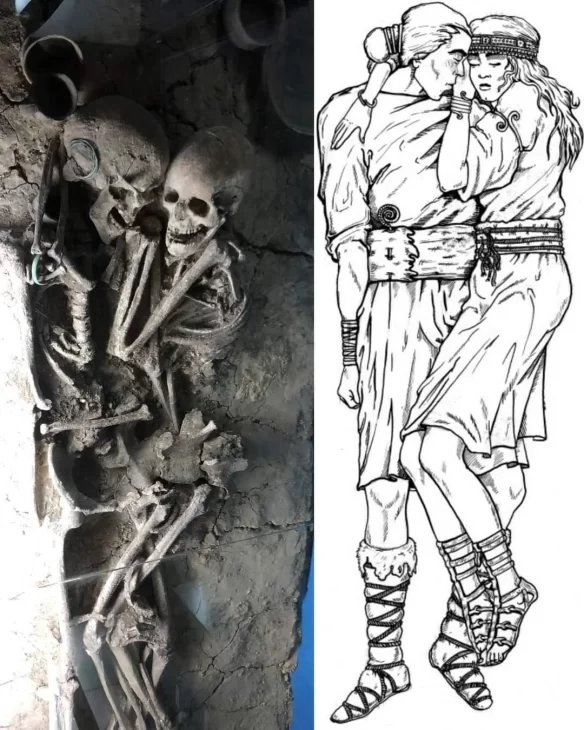
This one has informed the story I’m writing now (The Bear, which will be offered as a free serial when I’m done writing it… hopefully I’ll finish this year). This is a Bronze Age burial of a man and a woman in the Ukraine, near the town of Petrykiv. There is speculation that the woman elected to be buried with the man, possibly taking poison in order to join him in death. That’s not the part that caught my attention. What caught my attention, and thus my imagination, was the description of the burial:
It is a unique burial, a man and a woman lying there, hugging each other tight. Both faces were gazing at each other, their foreheads were touching. The woman was lying on her back, with her right arm she was tenderly hugging the man, her wrist lying on his right shoulder.
It’s such a sweet image, and it’s been in my head since I read about the discovery in 2018. Imagine being so in love with someone that you are buried together with them, forever in an embrace. Of course, such a burial requires an epic love story. I hope to deliver that. Of course, there are also demons and epic battles involved, because it’s me. But the kind of love between two people that would result in such a burial is the centre of this one.
For folks looking for inspiration for their fiction, particularly fantasy, I cannot recommend the academic fields of prehistoric anthropology and archaeology enough. So, I didn’t make a career out of my degree… Or, at least, not yet. If ever I manage to get to a point where my writing supports my life, then I can safely say that, at long last, I am using my degree. Not, you know, in the way I imagined when I graduated, but I wouldn’t be wasting my degree.
Are there any things in the realm of prehistory anthropology and archaeology that caught your eye and had you imagining stories to go with them? I’d love to hear about it!
When S.M. Carrière isn’t brutally killing your favorite characters, she spends her time teaching martial arts, live streaming video games, and cuddling her cat. In other words, she spends her time teaching others to kill, streaming her digital kills, and a cuddling furry murderer. Her most recent titles include Daughters of Britain, Skylark and Human. Her serial The New Haven Incident is free and goes up every Friday on her blog.
Women in SF&F Month: Linsey Miller
Today’s Women in SF&F Month guest is Linsey Miller! Her work in young adult speculative fiction includes “A Helping Hand” in the horror anthology The House Where Death Lives, “Give Up the Ghost” in the Lambda Award–nominated anthology Being Ace, the Lambda Literary Award–nominated dark fantasy novel What We Devour, and the fantasy novels in the Mask of Shadows duology (Mask of Shadows, Ruin of Stars). Coming out on June 3, her next book, That Devil, Ambition, is a standalone YA […]
The post Women in SF&F Month: Linsey Miller first appeared on Fantasy Cafe.Sensual Details in “Hands and Straight Lines” Envelop Your Attention
Carla Bradsher-Fredrick’s novel Hands and Straight Lines creates a calm yet unsettling zone of ambivalence…
The post Sensual Details in “Hands and Straight Lines” Envelop Your Attention appeared first on LitStack.
Teaser Tuesdays - The Twisted Ones
 So I put my dog in the truck and packed up a suitcase full of clothes, asked my aunt Kate to keep an eye on the house, and drove down to North Carolina.it's a long drive.
So I put my dog in the truck and packed up a suitcase full of clothes, asked my aunt Kate to keep an eye on the house, and drove down to North Carolina.it's a long drive.(page 7, The Twisted Ones by T. Kingfisher)
---------
Teaser Tuesdays is a weekly bookish meme, previously hosted by MizB of Should Be Reading. Anyone can play along! Just do the following: - Grab your current read - Open to a random page - Share two (2) “teaser” sentences from somewhere on that page BE CAREFUL NOT TO INCLUDE SPOILERS! (make sure that what you share doesn’t give too much away! You don’t want to ruin the book for others!) - Share the title & author, too, so that other TT participants can add the book to their TBR Lists if they like your teasers!
WHEN the WOLF COMES HOME by Nat Cassidy
Free Fiction Monday: Body Parts & Bathtub Rings
A desert lake. A severed arm. A thousand questions.
Las Vegas summer sun bakes Metro Detective Sofia Herrara as she carefully steps her way to solving this murder mystery, while protecting herself, her partner and the department.
From water wars to the mob, good guys to bad, she’ll follow the clues to answer these pressing questions:
Whose arm? Who died? And—most importantly—why?
“Body Parts & Bathtub Rings“ is available for one week on this site. It’s available in Crimes Against Nature, edited by Robert Lopresti. The ebook is also available on all retail stores, as well as here.
Body Parts & Bathtub Rings By Kristine Kathryn Rusch
The skin on the hand remained intact, although it was pale and bloated. Black hairs curved out of the base of the fingers and along the wrist. The body was missing, but the wedding ring studded with three visible diamonds wasn’t. The diamonds sparkled. This hand hadn’t been in the water long, which was both good and bad.
Las Vegas Metro Detective Sofia Herrara pulled gloves onto her own hands, the heat of the day making the task harder than it should have been. Her own hands were slightly swollen and just a little bit damp. Sweat trickled down her back despite the loose weave long-sleeve shirt she wore. Her dark khakis were probably sweat stained as well behind the knee. Part of the problem was her heavy boots, which required thick socks just to keep the blisters away. Her feet were hot, she was hot, and it would only get worse.
She was crouched in the midday sunlight at the edge of Lake Mead. Her wide-brimmed hat cast shade over the rocks of what had once been the lakebed. The water pushed against larger rocks about a foot away.
The water glistened as if the sunlight made it happy. Sunlight in July did not make Sofia happy. She had given her standard issue water bottle to her partner, Zach Gelb, to hold while she examined the crime scene. If, indeed, this could be called a crime scene. The crime had clearly happened elsewhere.
Zach had taken a few steps away from the scene to talk on his cell. He had his back to her, but he was standing still, not pacing, trying to act like this was a crime scene as well.
The sun was so high that Zach didn’t leave much of a shadow. There was, essentially, no escaping the sun out here at this time of day, which was usually when the lake was the emptiest—at least of locals. Tourists, on the other hand, had no idea what they were facing when they encountered the desert sun, the water, and the increased elevation.
The third person in their group knew that better than she did. The park ranger who had called the hand in, Roberto Bonetti —Call me Berto— had been out here for most of the morning as he waited beside the hand to preserve the scene.
He wore the National Park Ranger’s standard summer uniform, a tan shirt with tan slacks and boots as heavy as hers. His hat wasn’t thin and floppy like hers and would have made her head sweat.
Maybe he was used to this heat, although she had no idea how anyone could be. He did have two water bottles attached to his utility belt, along with some hydration packs and a small emergency kit. She hadn’t asked him how many times he had found dehydrated tourists suffering from heat stroke, but she suspected it was quite a lot.
The three of them were now waiting for the Clark County Coroner’s Office to send someone here. Technically, the ranger should have contacted them immediately, but this wasn’t Berto’s first rodeo. He could see that the hand was suspicious. Or rather, what was visible of the arm was suspicious.
The wrist was intact, but the forearm wasn’t. And it hadn’t been cleanly cut. It had been ripped through. The bone, which was what she had to go on, was jagged.
Which made it suspicious, and because it was, Berto knew that a detective would be needed. So he had called Metro first, and then called the coroner.
Sofia was grateful for that because the faster they all moved on this the better. The last thing she wanted was for the media to get wind of a severed hand discovered at Lake Mead.
As Lake Mead’s water levels had dropped due to the drought conditions of the past twenty-plus years, more and more bodies—or parts of bodies—got discovered. The national press corps went nuts a few years back when a body in a barrel turned up. That body was at least forty years old and most likely the remains of someone who had run afoul with the Las Vegas mob.
Since then, every single grisly discovery on the shores or sticking out of the water got the press’s attention. It would only be a matter of time before someone heard of this one.
Thank heavens, though, this hand had been discovered by a ranger and not a tourist. At least Sofia wasn’t dealing with social media postings and the hasty arrival of the local news channels. She’d faced that last fall when a skull was discovered by a couple hiking the lake bed. Turned out that skull belonged to a local man who had drowned while jet skiing in the 1990s, but it took a while for the DNA testing to come back, which meant she had to endure weeks of speculation and interviews about contract killings and the violence that was part of Las Vegas’s past.
She always tried to steer the discussion away from that and toward the changes in Lake Mead. The lake she remembered from her childhood was gone; what she saw was a tiny expanse of water revealing more and more of its lakebed.
A white “bathtub ring” encircled everything, marking where the waterline had been when she was a little girl. Even back then, though, Lake Mead was considered the deadliest national park in the United States. There had been more deaths at Lake Mead in the past two decades than at any other national park. She had actually looked that statistic up because she’d gotten so many questions about the deaths and discovered that Lake Michigan was the deadliest lake, but it wasn’t a national park site.
And when the deaths were put into a context, such as the number of deaths versus the number of visitors, the deaths were a tiny tiny tiny percentage. Last fall, she’d had all of those numbers at her fingertips, because she was so annoyed by the discussions of the mob and the murders and the deaths. She’d actually snapped at one reporter: How come you care so much about these so-called mob murders and not the bathtub ring around the lake? That’ll lead to hundreds if not thousands of deaths in the Las Vegas Valley if the drought continues…
She got pulled off of media duty after that, and no one sent her to Lake Mead again. Until now.
Although, to be fair, she wasn’t even sure this was a homicide. Not yet. For all she knew, the arm could have been severed in a boating accident. If someone got too close to a boat propeller or maybe got their arm entangled in an anchor chain, the force might sever the arm.
She was going to have to find out if local hospitals had treated someone with this kind of severed limb. If the arm’s owner had assistance from someone who knew what they were doing, the owner might’ve made it to a hospital before bleeding out.
Might was the operative word, though. The chances of surviving a severing like this would take skill and luck. There were ambulances parked in strategic areas around the lake, but a bleed-out like this one would need attention immediately. Just getting from one part of the lake to another might take five minutes, and then there’d be a hike to the water itself.
She didn’t really expect to find the owner of the arm alive, but she couldn’t rule it out.
She felt a half second of irritation. The coroner should have been here by now, considering the fact that Berto had called them right after her. But she knew it could sometimes take a while for the coroner to free up enough staff for an investigation. The last time Sofia had responded to a case out here—a case of simple murder, it turned out, one fueled by beer and fisticuffs—it had taken the coroner’s office nearly ninety minutes to arrive.
She braced her gloved hands on her knees and stood up. Her calves ached from the crouch. She used to be able to hold that position for an hour or more. Now, fifteen minutes nearly wrecked her.
Berto was standing near the shore—if one could call it that. He was staring at the other side of the water, where a couple of people—teens maybe?—were playing on the large rocks near the waterline.
“Berto,” she said.
He turned. His face was ruddy, his skin leathery from too much time in the sun. He had old eyes, which relieved her. She hated dealing with people who had not been on the job long.
He walked over, glancing at Zach, who was still on the phone. That did not bode well for the coroner’s arrival.
“I need to ask a few baseline questions,” she said, removing her small notebook from her pants pocket. The leatherette cover was damp. She clicked the pen attached to the notebook with a small plastic cord. Usually, Zach gave her crap about that.
He looked over, waved his phone at her as if to say, I can’t come yet, and grimaced in annoyance. She gave him a tiny nod. They’d worked together for years, so she didn’t have to tell him to get to her side as soon as he could.
Berto waited patiently.
“Tell me again how you found this hand.” She asked the question a second time for two reasons. The first was simple; she hadn’t had her notebook out when she originally spoke to him, although she suspected Zach was recording the encounter.
The other reason was she wanted to make sure that Berto gave her the same story, with few embellishments.
“I was walking my beat.” He had already warned her he used a lot of police shorthand because he found it more convenient. He had worked as a police officer back in the Midwest, so he knew procedure—and apparently liked the lingo. “I saw something white and flat on the rocks there. It looked organic, but I couldn’t be sure. And I didn’t smell it. Normally when you see something that white, the smell of decay hits you first.”
She waited, pen poised. He hadn’t given her this much detail before, but it was consistent with what he had already told her.
“I walked down to it, saw that it was a human hand, and called it in.” He nodded toward that hand. “You know the rest.”
She didn’t, though. He had spoken to dispatch, then to Zach, and then to her when she had arrived. The story probably seemed like old hat to Berto already.
She needed to move him off of that, distract him a bit. “When was the last time you were in this part of the park?”
He blinked, tilted his head just a little, clearly considering the question.
“Had to be a week ago,” he said. “We try to see everything, keep track of it all, but we’re dealing with a million and a half acres. We can’t monitor all the changes, especially not with visitors.”
“How early in the morning do you walk this?” she asked. Because it had to be morning; every local knew that this time of day could prove deadly quickly.
“In the open like this?” he asked. “As early as I can. Usually sunrise.”
“You called us at nine,” she said. It had taken her a while to arrive—first because of the drive and then the walk to this part of the park. She had given Berto permission to leave the area, but he hadn’t. He had been in this sun for hours now.
He didn’t even look wilted. She was becoming a puddle.
“I did,” he said. “I was just finishing up the rounds. I was planning to go to the station for a while, maybe have some ice coffee, maybe something to eat before I handled whatever crises arose for the day.”
“Ice coffee,” she muttered.
“It’s not as good as it sounds,” he said. “We just pour brew coffee over ice. Nothing fancy.”
“I’ll take not fancy at the moment.” She smiled at him. Then she let her smile fade. “You haven’t found other body parts, have you?”
“No,” he said. “Not recently, and not, y’know, something like this one that hadn’t been in the water long.”
She nodded. She had had Zach dig into recent findings at Lake Mead while they drove here. There had been a lot of body parts—apparently, the lake released its bodies in chunks—but nothing in the past few months. So, this confirmed what Berto was saying.
Now she got to the question she wanted to ask.
“The hand’s a yard or more from the water line,” she said. “How do you think it got here?”
He glanced at the water, the reflection of its surface lightening his skin just a little. Then he shrugged.
“It could’ve washed up in a boat wake,” he said. “Lots of speed boats create their own waves. Or it could’ve been a bird.”
“A bird?”
“They find all sorts of things. Then, if something startles the bird, it’ll drop whatever it’s carrying. I’m surprised there haven’t been any birds around this. But, I guess, there’s no soft tissue—eyeballs, whatnot. That’s less interesting to them.”
If he was trying to gross her out, he had failed. She’d probably seen everything he had and more. She had no idea where he had worked with the police in the Midwest. That covered a lot of ground, from small towns to cities like Chicago or Detroit.
“I was thinking the hand looked pretty fresh,” she said. “You think maybe someone dropped it here so that we could find it?”
“No.” His response was swift. “If they wanted someone to discover the hand, they would have gone to, say, Echo Bay. It’s the boat launch with the fewest restrictions right now, so too many people frequent it.”
“You think someone would know that?” she asked.
“Detective,” he said, with just a tiny hint of contempt, “if you came up here for something other than bodies, you’d know it too. We deal with a lot of complaints about the declining water level and the restrictions on people’s boats. We encourage everyone to come, but we really can’t accommodate them anymore.”
By the end of that little speech, the contempt had vanished. Maybe she had misread it. Maybe she was hearing frustration or anger.
“Talk to me about emergencies,” she said. “What happens with the serious ones?”
“Well,” he said, “we can’t help with most of those. The drownings are usually over before we’re notified. And if someone tries to kill themselves, we find out when the family realizes they’re missing. Usually we don’t learn someone’s a danger to themselves until deep into the investigation.”
“What about something like this? Something that involves a serious wound or a broken limb or a heart attack?”
Berto tipped the brim of his hat back just a bit. “If they call us, we can dispatch one of the ambulances. If the ambulance heads to Boulder City, it might be a while before another arrives to replace it.”
“Does that happen a lot?” she asked.
“Mostly in the spring,” he said. “It’s our busiest time. I’ve been lobbying for more medical services. But you know the whole drill about funding.”
“I do.” She looked down at that hand. “An ambulance couldn’t come down the path we walked.”
“No,” he said. “But a stretcher could. We’ve done it countless times.”
She crouched again, and tried to peer under the hand. If an ambulance had responded to something near here, the EMTs would have put the hand on the stretcher to cart it back. Once at the ambulance, they would have put the hand on ice.
Not to reattach the limb, should they locate the owner, but to take DNA and fingerprints off it, if possible.
Zach half-walked half-slid his way toward them. He was wearing dress shoes instead of his normal boots. He had initially thought he was going to be in court this morning. Considering the sweat stains on his white shirt and the fact that he was using his hat as a fan, he probably would have preferred testifying to this.
“Coroner’s assistant got lost,” he said. “I had to talk them through the directions. They should be here at any moment.”
“Good,” Sofia said, “because I was just beginning to wonder if we could find something to shade this hand from the sun.”
Something that wouldn’t contaminate it further.
A clatter sounded behind them. Sofia turned. A coroner she didn’t recognize was coming down the path sideways to accommodate the slight decline. Behind him was another person, wearing light clothing and a hat with a brim so low that Sofia couldn’t really see who that was either.
Both were carrying equipment. The person in the back had a white-and-blue cooler that was reflecting sunlight.
Zach went up to greet them. He had been talking to them on the phone, so he would handle it from here.
Sofia looked at Berto. “You feel like sharing some of that delicious ice coffee?”
He smiled at her, surest proof that he had seen everything. No newbie smiled like that over body parts.
“I’d be happy to,” he said, “if only to see what a glutton for punishment you really are.”
***
The ice coffee left her a little too jazzed, but it was not the highlight of the ranger station. The highlight was the aloe cream that she apparently needed despite her sunscreen and warm-weather gear. She had been in that sun too long.
All she ended up with, though, was a slight headache that lunch would cure. Zach didn’t stay long with the coroners and met her at their car.
He was already inside, AC running, when she approached. When he saw her, he scooted to the passenger side, and grabbed his laptop.
“We have an I.D.,” he said.
She handed him aloe. He lathered his skin while she backed the car out of the lot.
“Fingerprints?” she asked.
“Yeah, they were able to get some.” He grimaced. He hated watching the techniques that the coroner’s office used. If Zach could avoid working with the bodies, he would. “His name is Elias Venegas. He was reported missing three days ago by his wife.”
She pulled out of the lot and headed back toward Boulder City, taking her time because she knew that some drivers—usually tourists—were all over these roads.
“Why was he fingerprinted?” She pulled off her hat and tossed it in the back seat, then set the AC on frigid. The aloe had helped, but she was definitely burned. The touch of the sun through the window was irritating.
“He was bonded and certified. He went through all kinds of vetting.” Zach stared at his computer screen. “He was a well-known landscape artist who specialized in creating desert gardens.”
She glanced at Zach sideways. He was frowning. She was frowning.
“So, you’re thinking, accident?” she asked.
“I don’t know,” Zach said. “It’s weird. The wife reported him missing when he didn’t come home from work a few days ago.”
“Where’s work?” she asked.
“His offices are in downtown Summerlin.” He tapped the laptop. “Looking at the missing persons filings now. The intake officer said the wife was adamant that her husband wouldn’t disappear on her.”
A four-by-four passed her on a narrow corner, a boat attached to the back swinging into her lane. She barely had room to get out of the way and stay on the road.
“Jeez,” Zach said, sounding panicked. But Sofia’s heart rate hadn’t even gone up, which was why she was driving, and he was not.
“The report?” she asked.
“The intake officer was pretty diligent, even though he didn’t believe the wife,” Zach said.
Years ago, Sofia had worked Mis-Pers. Nearly everyone claimed that the person wouldn’t disappear without telling anyone, and usually they were wrong.
But to go from Summerlin to Lake Mead was a deliberate trip.
“Was he entertaining clients?” she asked.
“No,” Zach said. “He’d gone to visit a client.”
“Who?” she asked.
“The wife didn’t know but said the client was a really important one.” Zach scrolled along the laptop’s pad. “No one asked or explained what ‘important’ meant.”
So now the question became, should they call the wife and tell her about the body part just to get answers? Or did they leave that part out of this?
Sofia wasn’t ready to tell anyone yet about the hand.
“Contact his office, find out where he went,” she said. “And check the hospitals, see if this Venegas guy is in any of them.”
“The report says the wife already did,” Zach said.
He hadn’t worked Mis-Per, so he didn’t know that sometimes people called in a missing person’s report after killing someone, just to cover their butts.
“Start with Boulder City,” she said, “and then go to Kingman, Laughlin, Bullhead City. Places the wife wouldn’t have thought to check, if she had no idea he was at Lake Mead.”
“Hospitals first?” Zach asked. He sounded irritated, but he didn’t say anything. After all, she couldn’t check any of this, since she was driving.
“Yeah,” she said.
He tapped on the keyboard of his laptop, then picked up his cell with a sigh.
She dodged another four-by-four with a boat behind it, shaking her head as she did so. Who came out here in this heat? It had to be tourists.
An ancient RV weaved across the road before her, and she leaned on the horn, hoping to get their attention. She did. They snapped to their lane.
But as they went past, she frowned at it.
Trucks, RVs, boats. Lots of equipment, lots of empty spaces. No one thought twice about all of those vehicles heading to the lake. No wonder so many bodies turned up.
It wouldn’t be hard to transport them from somewhere else.
She didn’t say anything about that, though, because Zach was deep in his conversation with the hospital in Boulder City. He wasn’t having any luck.
She doubted he would.
Something about Venegas’s job and the fact that he worked in Summerlin made her think he was dead before he got to the lake.
But she would wait on what the coroner had to say. Sometimes cases surprised you. She hoped this wouldn’t be one of those.
***
They stopped at a local fast-food chicken place in Boulder City. She promised Zach a milkshake. He’d contacted all the hospitals in the area, and none had any record of an Elias Venegas, nor did they have a record of a John Doe who had come in missing a hand.
As she and Zach headed inside, they saw a sprinkler head near the edge of the door, leaking water all over the parking lot. She sighed and signaled Zach to get lunch while she asked for the manager.
When an older woman with a manager’s tag stuck her head out of the back area, Sofia said, “You know you have a leaking sprinkler, right?”
“Yeah,” the woman said. “People’ve been telling us.”
Which meant it had been going on for a while. “You realize you can be fined for excess use, right?”
“I won’t be fined,” the woman said, and walked away.
Sofia sighed again, knowing she couldn’t let that go. Too many people failed to report. She went back outside, took a picture, and sent it to the Southern Nevada Water Authority. They would know what to do.
Then she joined Zach at the table. He’d already picked up the food.
“This guy, he’s a big deal,” Zach said in between bites of a chicken tender. “The mucky-mucks in town, they all hire him to transform their lawns into a desert oasis.”
He had to be half-quoting some promotional something or other. Sofia took her orange tray and pulled it toward her, grabbing a fry as she did so.
“His fees are astonishing,” Zach said. “I mean, hell, I’d just lay ratty Astroturf instead of pay for this.”
“Or pull up the grass yourself,” she said.
“Yeah,” Zach said with a grin. “Desert landscaping done easy.”
Nevada had passed a law as the drought crushed everything, forcing residents to get rid of what the state termed “decorative grass” by the end of 2026. Some people were doing that already. Others were pressing for a variance.
She tried not to follow any of that because it irritated her too much. What was wrong with people? They lived in a desert, and water had been scarce from the start. In the 1990s, predictions were that Las Vegas wouldn’t make it another ten years because of a lack of water, so the city embarked on a recycling program.
Now, all water used indoors was recycled. The problem was things like that broken sprinkler. Outdoor water was one-time use only, although there were measures trying to reform that as well.
“Lemme see what he charges,” she said.
Zach spun the laptop around. Venegas’s website was beautiful, high-end, and filled with lovely pictures of various landscapes. He hadn’t called himself a landscape artist. Architectural Digest had.
This guy was one of the top landscape designers in the country. A guy like that didn’t go on a jaunt to Lake Mead in the middle of the week.
“Find out if anyone is actually in the office,” Sofia said.
She had a feeling, but it wasn’t something she could articulate. Not yet.
Zach looked at her measuringly. He had worked with her long enough to know that she wasn’t going to share her thinking yet. He respected the hunches, but he always wanted to know how she got there, which led to irritated discussions, which neither of them needed right then.
He spun the laptop back toward himself, glanced at the number, and dialed with his thumb. Then he grabbed the milkshake and stood up, heading toward the car.
He had finished eating, and she had just started. She finished in a hurry, headed outside, and slipped into the car’s air conditioning, which was fighting a losing battle with the heat. Records every day this July, and it looked like today would be no different.
“We’re in luck,” Zach said. “One of the associates is waiting for us.”
“Did you tell them why we’re coming?” Sofia asked as she put on her seat belt.
“Didn’t have to,” Zach said. “When she found out who I was, she said, ‘I hope to hell this is good news about Elias.’”
“Did you tell her the bad news?” Sofia asked.
“I didn’t,” Zach said, “because we still don’t know. I mean, maybe…”
Sofia gave him a knowing nod. They did know; they just couldn’t prove anything. And an excess of caution was always the best.
“I just told her we were investigating the missing person report,” he said.
“Was she surprised?” Sofia asked.
“Are rich people ever surprised that someone is doing something for them that doesn’t happen for anyone else?” he asked.
“She’s probably not rich,” Sofia said. “She works for someone.”
“Yeah, maybe,” he said, “but given how much money that place brings in, she’s richer than we are.”
They were going to have to drive to downtown Summerlin, and the easiest way was to take the Beltway, which would give Sofia exactly no time to go home and clean up. Ah, well. The extra aloe had helped, as had the chocolate shake.
She drove while Zach continued to tap on his laptop, occasionally naming the very famous clients who had hired Venegas. Apparently, the pictures of their properties were gorgeous, if Zach’s enthusiasm was any indication.
She was going to have him look deep into the business’s financials when a call came into her cell. It was the coroner. She put it on speaker.
“Please tell me you found the rest of his body in your cooler,” Sofia said.
“Nope,” the coroner said. “I suspect it’s still in Lake Mead.”
“Really?” Sofia asked. “We’ve been calling hospitals to see if he’s alive.”
“The arm was severed post-mortem,” the coroner said, “and I think severed is the wrong word. I think the chain that was wrapped around it somehow twisted and snapped the bone.”
“Chain?” Sofia asked. Zach was leaning forward, frowning at the car’s speakers as if they were the coroner herself.
“Yeah,” the coroner said. “We found bits of it in the skin and the bone itself.”
“This wasn’t, say, a boating accident? Something got caught in, maybe, a propeller?”
“Well, maybe, in one sense,” the coroner said. “A propeller might’ve snagged that chain and put enough force on it to make it snap the arm.”
“And send it to the shore?” Zach asked.
“Flying to the shore, maybe,” the coroner said. “The hand was dropped from above. There were rocks in the skin, and they came from directly underneath the hand. So it landed with some force.”
“Not deliberately dropped, then,” Sofia said. She wasn’t sure if that was a question or not.
“Well, not unless it was deliberately dropped from some kind of height,” the coroner said. “And given that there was no hills in that part of the beach…”
“Yeah, okay,” Sofia said.
“I’ll have more for you as we investigate, but I thought you’d want to know that this person was dead when he went into the water. Someone wrapped him in chains and probably attached him to something they thought would sink. It probably didn’t go as deep as they wanted.”
“Or they put him somewhere a bit too shallow,” Zach said.
“Maybe,” the coroner said. “But people usually underestimate how much weight it takes to hold a gaseous bloating body underwater. Bodies like that want to float.”
Zach winced. Apparently, he could picture that. If Sofia let herself, she could smell it, which wasn’t something she really wanted to do—not even in her imagination.
“I’ll have more for you later,” the coroner said, “but I figured you would want to know that this guy was already a corpse when he was tossed into Lake Mead.”
“Thanks,” Sofia said, but the coroner had already hung up.
“So,” Zach said, “a murder then.”
“Most likely,” Sofia said.
Whether they could prove it or not would be something else entirely.
***
The offices of Venegas Landscape Artistry and Design were in one of the newer buildings in Downtown Summerlin, near the Las Vegas Ballpark. The entire development was snooty, catering to people with more money than Sofia would ever earn in her lifetime.
The building had opaque glass walls that reflected the mountains. The site looked lovely, except from the parking lot. There, it felt like she had entered a sterile office park that could be in any city.
Inside, the walls belied that impression. The doors opened onto an expensive blue and gray lined carpet. The walls were covered with murals—if one could call a black-and-white gigantic flower a mural.
The offices took up the entire seventh floor. As she and Zach emerged from the elevator, the first thing she noticed was that the art had changed. The walls were covered with photographs of the desert or desert plants. Brown and gray rocks, with a bit of green or gray or the ever-blooming flowers, something she actually loved about this city.
Those images soothed her, which was probably what they were supposed to do. There was another set of smoked glass doors, and as she was about to go through, the doors opened.
A lanky woman with skin so leathery that it looked like it had been glued to her bones came out, right hand extended.
“Officers,” she said in one of those sickly sweet voices that people used when they were uncomfortable.
“Detectives,” Sofia said, pausing between that word and the rest, “Herrera and Gelb.” She deliberately did not give the woman any clue as to who was who.
Since neither of them took her hand, the woman let it drop.
“I’m Louisa Langford,” she said, pushing the smokey door open. “We spoke on the phone.”
She said that to Zach.
“We’ve been worried sick about Elias. He missed several important meetings, and his wife has no idea where he is. I take it you do?”
She led them to a conference room, talking the entire way. The conference room was a glass box. The view was visible from the hallway, but so were the people inside.
Sofia went in and stood near the windows. The heat of the day radiated through the glass, leaving the front of her warm and her back cold in the air conditioning.
“We don’t know where he is,” Zach said, not exactly lying. Sofia could see him reflected in the glass, his body larger than the towers dotting the Strip. “When did you last see him?”
“Three days ago,” Langford said. “He was going to see one of our clients. He was really nervous.”
That caught Sofia’s attention. She turned, so she could see Langford’s face. “Why would a man with his credentials be nervous?”
Langford took a deep breath and looked over her shoulder. Then she made sure her back was to the hallway.
“Look, this client is…” She paused. “I’m not supposed to discuss him or the work, but well, Elias is missing, and I’m scared.”
“Why?” Sofia asked.
Langford gripped the back of a chair. “You know we have a lot of foreign money, billionaires, in Summerlin, right?”
Sofia blinked, trying to follow. “You’re saying your client is a foreign billionaire?”
“I’m not saying that,” Langford said. “I don’t give out client names.”
She let that hang for a moment, but neither Sofia nor Zach jumped on it. They would figure this out, with a warrant if they had to. First they needed to let Langford talk.
“We often don’t meet the actual clients,” she said after a moment, “but instead, we meet the people running their estates. Those people are…protective…of their positions. Apparently, the estate manager, in this instance, was…difficult at best. Elias wouldn’t let any of us near him.”
“Difficult why?” Sofia asked.
“Elias used the word thugs to describe the security. He was worried for anyone on our team to go up there and work. The security is armed and…his word…volatile.” Langford’s fingers dug into the back of the chair.
Interesting, Sofia thought but didn’t say. “So what did they want Elias for?”
“Apparently, someone wanted to change the estate’s landscaping to desert landscaping.” Langford raised her eyebrows. “You’re aware of the Named and Shamed List?”
“Yes,” Zach said without looking directly at Sofia. He knew she didn’t always follow the news. But she was aware of the Named and Shamed List, mostly because it frustrated her. Every year, the Las Vegas Valley Water District released the names of the top 100 residences that used too much water.
The problem was that all of them belonged to the rich, who could afford the exorbitant fines that came with excessive water usage. Sofia was of the opinion that anyone who overused their allotment—in some cases by millions of gallons per year—should have their water shut off until there were changes.
But she wasn’t in charge of that.
“Many of our clients come from the list,” Langford was saying to Zach. “But they’re usually locals who made good and want to change their behavior and cut their water footprint.”
Zach nodded.
“Someone in our current client’s compound wanted to change the behavior there or at least change the unfavorable reporting. Elias was going to essentially say he couldn’t do what they were asking, and they needed to hire someone else.” Her hands ran along the top of the chair as if trying to rub it clean.
“What were they asking?” Zach asked.
“If we could set up a system that made it look like they were using less water without changing the landscaping at all.” Langford frowned. “Of course we can’t, not legally. We’d have to shuffle the water meters and change the way that things are recorded…I’m sure someone could do it, but we certainly can’t.”
Sofia could hear the frustration in her voice.
“So, you fire the client,” Sofia said. “People do that all the time.”
Langford straightened her back. “We do that all the time as well. But this client…” She looked away as if conjuring a memory. “Elias told them he wasn’t interested in working with them. I guess it got heated. When he came back, he was really upset because we’re all about conservation here.”
“Okay…” Zach said, trying to keep his voice level as if he didn’t understand where this was going.
Langford looked at him, her gaze sharp. “Elias was afraid…well, we were afraid…that the water waste would continue. Millions of gallons wasted and untraceable. It’s just…wrong.”
Sofia didn’t see how any of that was worth killing over, though. That thought must have shown on her face because Langford squared her shoulders.
“I know most people think this is silly, but it’s not. Water waste here in the valley is a matter of life and death for all of us. For the city too.” Langford had made a fist with her right hand, and pounded it slightly on the back of the chair. “I know it’s not an immediate problem. People don’t think about the future—”
“What happened?” Sofia asked. She didn’t need the lecture. She did worry about the future, but right now, she needed to focus on the present. On this case. “He was angry. He must have done something.”
Langford nodded, just once. “Something he’d never done before,” she said. “He reported them to the Water Authority so that they could be on the lookout for any kind of tricks. And he was talking to some people with law enforcement ties—lawyers, in particular—to find out if doing such a thing would be fraud on a large scale.”
“Large scale?” Zach asked.
“A felony, to make them stop,” Langford said.
That would make no difference to a foreign national, but it might to the estate manager, if they were local.
“I’m confused,” Sofia said. “If they’re not a client, why did Elias return to the estate after reporting them?”
“They’re still on our books as a client,” Langford said. “Elias was going to give them a list of landscapers to replace him. Only he didn’t make a list. He was going to tell them off. I told him not to.”
She gave them an odd look.
“I was scared for him. I really was. These people aren’t people you cross or confront. They play by different rules.”
“Because they’re armed?” Sofia asked.
“No.” That single word had frustration in it. “Lots of our clients have armed security these days. But these guys—they seem violent.”
“You’ve met them?” Zach asked.
“No,” she said. “Violent was Elias’s word. And I was scared. But he went anyway.”
“And no one has seen him since?” Sofia asked.
“That’s right,” Langford said. “No one has seen him since.”
***
The nice thing about Summerlin was that it was a brand-new planned development. Started in the 1990s, most of the Vegas Valley’s wealthy migrated up there for enhanced security and privacy. The communities were gated, even though the homes were on multiacre estates.
Enhanced security meant cameras. It meant monitors. It meant doorbell cameras and prying eyes, even though the locals wanted privacy. They got it behind their own gates but on the way to and from the gate? They had no privacy at all.
So that was why it wasn’t hard for Sofia and Zach to trace what happened to Elias Venegas. As they drove away from his business, Zach looked up the foreign nationals on the Named and Shamed List. Most had been on the list for decades because no one had been able to shut them down. But the newcomer to the list was a Chinese billionaire who owned casinos in Macao and who had some ownership in one of the casinos on the Strip.
The billionaire had never been to Las Vegas, apparently preferring to park his money here without bothering to visit it in person. But there had been dozens of reports of late-night parties on the estate, lots of random weapons fired, and some generally out-of-control behavior that made the wealthy neighbors nervous.
A new estate manager was hired, and promises were made to the gated community’s board that the estate would clean up its act. Apparently, someone thought that included cleaning up the landscaping.
It took more than a week of careful investigation and several warrants to get information from nearby security cameras. Sofia also got permission to dredge Lake Mead near where the hand had been found.
Sure enough, Venegas’s body wasn’t that far out, in waters deep enough to boat but too shallow to really hide a corpse effectively.
The story, as it came out, was sad and simple. Venegas had gone alone, gotten into a loud verbal disagreement with the estate manager. The fight brought in security, who saw Venegas as a threat, and shot him.
Then the guards were informed as to who he was and what they had done. That night they placed him into a van and drove it to Lake Mead. It showed up on several traffic cams along the way.
The big mistake they made, though, was driving his car along with it. That car was in the lake as well, only it hadn’t been found yet.
Sofia had everything wrapped up within the month. So many employees of the estate saw what happened or were involved, and did not want to get charged with aiding and abetting. That made them talk.
The Chinese billionaire did not help them. He fired the estate manager and put the entire place on the market.
And all of this happened before the media got wind of any of it, which relieved her. It put her in charge of the way that the story got covered.
No one mentioned the severed hand in Lake Mead. That would come out in trial.
Instead, she managed to get a friendly journalist to report on the center of the story—or at least, what she believed to be the center of the story:
Elias Venegas was a passionate defender of the future. He had just run into someone so stuck in the past that they had been willing to commit fraud to make their bad habits invisible to the community writ large.
The story had that focus for two whole days before the preliminary hearings. And then the arm and the body in Lake Mead and the stories about the lake of death began.
Two days were more than she would have gotten otherwise. Normally, she didn’t care about coverage, but in the Lake Mead cases, she did.
She wanted people to understand that bathtub ring. She wanted them to know that the drought situation had long since become serious.
The death of Elias Venegas wasn’t the first death connected to the changes in the climate, and it certainly wouldn’t be the last.
But it had been dramatic enough to catch the world’s attention—if only for a few hours.
And sometimes, that was all it took.
___________________________________________
“Body Parts & Bathtub Rings“ is available for one week on this site. The ebook is also available on all retail stores, as well as here.
Body Parts & Bathtub Rings
Copyright © 2025 by Kristine Kathryn Rusch
Published by WMG Publishing
First appeared in Crimes Against Nature, edited by Robert Lopresti, Down & Out Books, 2024
Cover and Layout copyright © 2025 by WMG Publishing
Cover design by WMG Publishing
Cover art copyright © Canva
This book is licensed for your personal enjoyment only. All rights reserved. This is a work of fiction. All characters and events portrayed in this book are fictional, and any resemblance to real people or incidents is purely coincidental. This book, or parts thereof, may not be reproduced in any form without permission.
Women in SF&F Month: Pat Murphy
Today’s Women in SF&F Month guest is Pat Murphy! Her work includes the short stories in Women Up to No Good, the Philip K. Dick Award–winning collection Points of Departure, and the Nebula Award–winning novel The Falling Woman. Pat’s latest SF&F novel—her first in more than 20 years—is The Adventures of Mary Darling. This subversive retelling of Peter Pan and Sherlock Holmes focuses on Mary Darling—the mother of the children who flew away with Peter Pan and the niece of […]
The post Women in SF&F Month: Pat Murphy first appeared on Fantasy Cafe.The Inheritance: Chapter 2

A massive cavern spread in front of us, awash in bioluminescence like some bizarre rave. It resembled an enormous egg set on its side, with the wider end to the right ending in a solid wall and the narrow end to the left splitting off into several dark passages. The cavern’s floor sloped to the center where a wide stream ran through the cave from left to right. The water was like glass, perfectly clear.
At the banks, the stream branched into several small pools bordered by rimstone dams, some shallow, others deeper. The pools flowed into each other, stretching toward a flat island on our right. The stream split around it and emptied into a lake, its waters moving slowly and disappearing under a spectacular flowstone wall where layers of calcite formed a frozen stone waterfall.
“I need lights, people!” Melissa called out.
The mining crew spread out, planting floodlights along the nearest wall. The portable generator on the central cart sputtered into life, and bright electric light illuminated the cavern. The sloping floor was ridged with calcite, and it looked slick. A good way to break a leg.
“Much better,” Melissa declared. “It’s almost like we know what we’re doing.”
London nodded to the tank. Aaron moved to the left and planted himself in the narrower part of the cave, between the dark tunnels and the mining crew. London stayed at the entrance, guarding our exit route. The three strikers fanned out along the perimeter.
It was my turn to shine. The cavern walls were awash with swirls of bright green mixed with rust-colored metallic deposits. Promising.
I took a deep breath and flexed.
The official term was talent activation, but to me it felt like flexing a muscle I didn’t normally use. The world turned crystal clear. The edges of the rimstone dams and contours of the flowstone waterfall came into sharp focus, as if I’d adjusted my eyes to higher resolution. The outlines of individual mineral deposits glowed slightly.
I focused on the closest wall, scanning and evaluating, sorting through different hues. Malachite, copper-rich chalcopyrite, decent but not exciting. Cuprite, quartz, calcite, trash, garbage, junk…
A patch of funky plants to the left glowed with dull, pale yellow. Healer Slipper. A weird variant, but definitely in the same ballpark as the more common varieties. If processed, it would yield a potent broad-spectrum antibiotic. A decent haul, if nothing else showed up.
In the wake of the gate catastrophe and the emergence of the Talents, humanity had tried to find some frame of reference. We settled on video games. A lot of the Talent classification mirrored the familiar game classes: tanks, healers, scouts, and so on. The closest video game match for my talent would’ve been appraiser, but the government nixed that one because it didn’t sound heroic enough and was too “materialistic,” which was utterly hilarious considering what I did. Unlike Melissa, who only sensed ores and only when she was on top of them, I evaluated everything in my environment, organic or inorganic.
So far, the cavern has been relatively disappointing. Usually, orange gates offered a little more. I pivoted slightly, turning away from the wall.
The inside of the stream lit up like a Christmas tree. Well, that was something.
“Gold in the water,” I announced. “Check the pools.”
“Go!” Melissa barked.
The miners scrambled over calcite walls. The pools directly in front of them ran a little deeper, and the water came up to their thighs.
Sanders thrust his hand into the pool and pulled up a tangerine-sized gold nugget. “Holy shit!”
The mining crew erupted into a controlled frenzy. Half of the miners went into the pools with buckets, while the other half positioned themselves on the shore, emptying the buckets into wheelbarrows.
I kept scanning. Gold was okay. Just okay.
“We got time, people,” Melissa called out. “Don’t hurt yourself. Slow is smooth, and smooth is fast.”
A bright swath of deep crimson flared on the edge of my vision. The colors of the glow didn’t always make sense, but red usually meant something valuable. I turned slowly, following it, and focused. A thick vein running from the center of the cavern all the way to the far wall…
It couldn’t be. I squinted at it to make sure I wasn’t imagining it.
No, it was there. And the crimson got deeper at the other end of the cavern.
“Melissa?”
“Yes?”
“Dump the gold.”
The mining crew stopped. Sanders closed his fists around a handful of nuggets and hugged them to his chest. Gold fever was a real thing. Something about the bright shiny yellow metal made people lose their minds.
I pointed to the beginning of the vein along the wall of the island, by the two pools closest to the shore. “Adamantite. From here to there. Solid, less than a foot down. We’ll need more carts.”
Melissa splashed into the stream to the adamantite vein buried under calcite deposits and put her bare hands onto the stone. She grunted, squeezed the rock surface with her fingers, shook from the strain, and stumbled back.
“Goddamn! Team One here! Team Two there! I want those drills running five minutes ago!”
The gold went flying. The mining crew grabbed their drills. Safety glasses and noise-dampening headphones went on, and they waded into the river and attacked the dams and the island.
Gold was expensive but adamantite was twelve times more valuable, because it could be refined into adamant. In the same family as osmium, adamant was incredibly durable. Adamant-enhanced armor could withstand machine gun fire. Adamant-coated blades cut through solid metal and monster bones like butter, without losing their edge.
We found it rarely and usually in small deposits. A cubic yard of adamantite was a record-breaking haul that would mean a big bonus for every guild member that entered this breach. We had a lot more than a cubic yard here. In all of my time crawling in and out of the breaches, I had never found a vein half that large.
The drills chiseled at the rock with a dull roar. The first chunk of adamantite fell free, a dark, almost black basketball-sized rock that looked like frozen tar in the crystal-clear stream. The drills stopped as everyone stared at it. Melissa tried to lift it out of the water, couldn’t – it was ridiculously heavy – and laughed.
“We’re gunna be rich!” someone yelled.
“Ada, I love you!” Melissa declared. “Marry me!”
“Sorry, I don’t want to ruin such a good friendship.”
People laughed. Next to me, London cracked a smile.
“Friendzoned,” Melissa groaned.
“It’s not you, it’s me, Mel. I’m the problem.”
More laughter.
Melissa shook her head. “Back to work, people! And someone help me with this rock.”
The miners resumed their drilling.
The vein continued under the stream, veering across the cavern floor to the left and behind the far wall. Getting adamantite from under the water would be cumbersome, and our time was short. The wall deposit lay deeper, but it was a better bet.
I went down the slope to the water. The best place to cross was to the left, by Aaron, where the stream was relatively shallow. I headed there and waded in, careful where I put my feet. The rocks were damn slippery, and the water came up past my knee. Magnaprene wasn’t the most comfortable fabric, but it was waterproof.
I hiked over the shallow calcite ridges to the wall, pulled a can of fluorescent paint from the pocket of my coveralls, and set about tracing the contours of the deposit in bright Safety Yellow. A hell of a find. Not that I would get anything out of it other than bragging rights. Government employees didn’t get gate loot bonuses, and that wasn’t why I’d taken this job.
The steady roar of the drills filled the cavern.
I was thirty-three years old when I saw my first glow. One of the larger US guilds somehow obtained permission to sell sebrian knives to the public. Sebrian was found only in breaches, and the knife prices started at $1,000 for a tiny pocket blade. Our advertising agency had taken the contract and promptly sent it to me with the key phrase of “rugged luxury.”
I was sitting in my office staring at the knife and trying to figure out the right approach, when the blade turned pale pink. The glow refused to fade, and when I focused on it, something in my brain clicked. The weight, the density, the structure of the metal somehow popped into my mind and combined into a specific … profile was the best word.
I drove to the ER. I thought I was dying. Twenty-four hours later the DDC came calling with a contract and a patriotic sales pitch. Assessors like me were rare, and the government hoarded us, to the point of making it illegal for guilds to hire their own private assessors. The guilds had poured an obscene amount of money into lobbying against that law but got nowhere.
The invasion wrecked my life. I’d looked at that contract and realized I could do something about it. Every time I went into the breach, I found something to make us safer. Today it was adamantite. A drop in the bucket, but it was my drop.
I finished tracing the wall and set the can on a rock.
Elena crossed the stream and lingered on my left, looking toward the tunnels. She peered at the dark passageways, turned, her face sour, and called, “Stella!”
Stella, who was on the other shore watching the miners, didn’t move.
“STELLA!” Elena roared.
The dog handler spun around.
The scout waved her over. “Bring the dog!”
Stella splashed through the stream, Bear on a leash, and trekked over the ridges to us.
“I need you to check the tunnels!” Elena yelled over the drilling noise.
“Which tunnel?”
“Start with the left!”
Bear yanked at her leash, jerking Stella backward, toward the stream. Stella said some command I didn’t catch.
Bear yanked on the leash and erupted into barks.
Elena waved her arms. “Control your dog –”
Something burst out of the middle tunnel. It swept past Aaron, a vaguely humanoid shape in pale blue garments, so fast it was a blur. Four other blurs chased it, wrapped in dark gray. They tore past the tank in a flash.
Aaron’s top half – shield, armor, and body – slid to the side and fell to the ground.
For a horrifying moment, I stared straight at the stump of his torso, still standing upright. It was standing upright.
The blurs wrapped around us. I froze. They spun about me like a whirlwind, the four gray beings striking and slicing, while the creature in blue parried with impossible speed. I caught a glimpse of arms in dark armor gripping silver blades and inhuman faces with fangs bared. A second, and they tore across the cavern toward the wall and the mining crew.
Untouched. I was somehow uninjured.
I turned to Stella on my right.
Her head was missing. There was her torso in indigo magnaprene, her neck, but no head.
The headless body crumpled to the ground.
A gasp came from the side. I turned on autopilot, still trying to process Stella’s missing head. Elena’s guts spilled out of her stomach. The scout clutched at herself. Dark blood poured out of her mouth. She made a horrible gurgling noise and fell.
This couldn’t be happening. It was a weird, horrible nightmare. I was dreaming that I found the magic motherlode of adamantite and then monsters came and killed everyone.
The air smelled like blood and bile. To the left four inhuman creatures tore at their prey in the blue robe, running on the walls and leaping in for the kill only to be knocked aside. Three miners floated in the stream, face down and the water was red, so red…
Oh God. It’s real. It’s all real.
Panic smashed into me like an icy hammer. I had to get out of here. Now.
The only safe exit was on the other side of the stream. I sprinted across the ridges to the water.
To the left, the fight swung back and forth along the lake’s shore.
I slid over the first rimstone damn, tore through the pool, climbed over the other side, and landed into the stream. Water came up to my thighs and I waded through it, squeezing every drop of speed out of my body.
Half of the mining crew was still drilling.
“Run!” I screamed, waving my arms. “Run!”
Sanders turned, plucking the headphones off his left ear, saw my face, whipped around, saw the creatures, hurled the drill aside, howled, and ran for the entrance. The line of miners broke as people charged to the exit.
Time stretched like molasses. There was only me and the water trying to stop me. I just had to make it across the stream.
At the cave entrance, Melissa was scrambling up the slope, toward London. The blade warden stared straight at me. Our gazes met.
Help me…
A door slammed shut in London’s eyes.
No. No!
Melissa shoved Anja Presa out of her way. The slender woman slid on the rocks and fell, rolling down to the stream.
I can’t die here. I have to get home to my kids!
I was running so fast. Faster than I’d ever run in my life, and I wasted precious breath on a scream. “Wait! Wait for me!”
London’s face was cold like ice. He yanked something off his belt. A grenade. He carried aetherium concussive grenades to be used as a last resort.
“Throw it!” Melissa howled and ran past him.
London looked straight at me.
Alex! No!
He dropped the grenade. It rolled toward the stream, bouncing over the limestone. The blue forcefield of his warden talent flared into life, wrapping around London. He turned and fled into the tunnel.
The world exploded.
The blast slammed into Sanders ten yards ahead of me. Water punched me off my feet. I flew like a rag doll and smashed against solid rock. My right leg snapped like a toothpick. My spine crunched. Agony splashed across my side and bit into my ribs. My ears rang, my head swam, and the air in my lungs turned to fire.
I tried to breathe and couldn’t. There was water on my face. I was in the stream face down. I had to get upright, or I would drown.
I wrenched myself up.
Bright white aetherium smoke filled the cave. I couldn’t see anything, I couldn’t hear anything, I couldn’t breathe. I could only hold still as the pain drowned me.
“Mom! Don’t die!”
I won’t. I promise.
I forced myself to take a tiny breath. It felt like jagged glass cutting its way through my throat. I coughed through it and willed myself to take another. And another, swimming through the pain, one tiny sip of air at a time.
The smoke drifted up. My vision cleared. I was sitting in one of the pools by the shore, with the water up to my armpits, with my back pressed against the rimstone wall. Next to me a severed human head rested on the pool’s bottom. The dark curly hair swirled with the current. Stella.
It should’ve hit me like a semi, but instead I simply noted it, the same way I noted the blood spreading from my right leg and the broken glass that ground in my lungs with every breath.
I pulled the leg of my coveralls up, out of the boot. A jagged bone cut through the skin of my calf. A compound fracture. Okay. I tugged my pant leg over it.
I had to get the hell out of here. Out of this cavern. Out of the breach.
The exit was no more, blocked by a wall of rubble. London’s grenade collapsed the ceiling of the tunnel. He and Melissa left me to die.
The clump of alien creatures passed along the opposite wall, all but floating over the debris that had sealed the exit. I didn’t hear any gunfire. Our escorts were dead.
The aliens darted to the right, absorbed in their fight. They weren’t targeting the humans. Aaron, Stella, Elena, they were simply in the way, cut down in passing as the four creatures in gray tried to kill the being in blue. And if their fight swung this way, I would be in the way, too.
I had to get out of the line of fire.
The wall in front of me, where the exit used to be, was at least forty yards away and sheer.
I looked over my shoulder. There was a niche in the wall behind me, next to my yellow paint marks, natural depression in the rock. A place to hide.
I turned around. My right leg screamed. Standing was a no go. I would have to crawl on all fours.
I clenched my teeth and crawled out of the pool.
My right leg burned, sending stabs of hot pain through my knee. I could do it. Stay low, move slowly, don’t present a threat. It was only pain. I could endure pain.
Twenty yards to the wall.
Fifteen.
I hit my knee against a sharp rock, and my weight landed on my injured leg. The world went white for a second. I sucked in a small breath and kept moving.
Ten yards. Almost there.
Almost.
My fingers touched the stone. I turned around and tucked myself into the niche, pressing my back against the wall. There was a trail of my blood across the cave floor.
The creature in blue was still moving, but only two gray blurs remained. The third lay on the rocks, a smudge of dark fabric that shifted whenever the fight drew closer, stretching toward it like a living thing. I couldn’t see the fourth.
To the right something moved by the rock.
I sat very still.
A furry head with big ears poked out from behind an outcropping.
Bear.
I licked my lips, trying to get my mouth to work. “Bear.” I could only manage a whisper. “Come.”
The German Shepherd crawled toward me, pressed against my thigh, and let out a soft whine.
“They left you, too.”
I hugged the dog to me. We sat by the wall and watched the fight tear across the cave. The blurs were so fast. How could anyone move that quickly? It should’ve been biologically impossible.
One of the remaining gray blurs collapsed.
The last gray attacker shot toward us. It took me half a second to realize it wasn’t a coincidence. It was aiming for me.
There was no time to run, no time to do anything. I threw my arm in front of Bear shielding her on pure instinct. The gray blur loomed above us… and stopped.
I finally saw it clearly, a tall creature with four arms, wrapped in a tattered gray cloak. Its hands had too many fingers, long and clawed, and each hand clenched a sword. It stared at me with terrifying eyes, its irises missing, its sclera a solid mass of solid black, and its mouth, on the face of white pearlescent skin, was a wide, dark slash filled with nightmarish teeth. A blue blade protruded from its chest.
This is also real.
The gray cloak stretched toward my face, like some strange amoeba, its strands long and viscous.
The blue blade turned, twisting.
The creature spat purple blood and went limp.
The sword slid back into its body. The cloaked being fell to the side and slid a few feet down the slope.
A tall figure stood behind it, clad in a shimmering, ice-blue robe. The silhouette looked chillingly human, too tall, with limbs that were too long, but unmistakably familiar. The head was a solid chunk of metal, twisted into a sleek horned shape. The same metal, blue with gold filigree, sheathed their body under the robe. No visible skin. Even the fingers of their right hand, gripping the blue sword, were coated in metal. Their left arm was missing, cut off just below the biceps, and bright red blood spurted from the cut.
None of my briefings had ever mentioned a being that appeared this human. Animals, monsters, inhuman sentients with strange anatomy, vaguely humanoid beings, yes. But never this.
The figure touched their helmet. It split apart and retracted into itself. An older woman looked at me. Her skin was a muted pastel pink in the center of the face, darkening to a vivid turquoise near the hairline. A straight nose with a blunt tip, a narrow-lipped mouth with the same pink lips, and upturned eyes with blue-green irises, slightly too large for an Earth native, but not enough to alarm anyone.
Aside from the skin color, she looked so human, it was terrifying. There were crow’s feet at the corners of her eyes and laugh lines by her mouth. Either the DDC did not know, or they’d lied.
The woman stared at me. Her eyes were sad and mournful.
I stared back.
She swayed and fell.
What do I do now?
The sound of hoarse breathing echoed through the cavern.
She saved me. If she hadn’t stabbed the gray attacker, I would be dead.
Another hoarse breath. Another.
Fuck it.
I shifted on all fours and crawled the few feet to the woman.
The arm was sheared as if by a razor blade, the cut so precise, it was like an anatomy slide. I could see the bones among the bloody muscle. Blood shot out with every breath.
“We’ll need a tourniquet. Hold on.”
I dug in the pocket of my coveralls, extracted the paracord I always carried, and pulled it loose. Paracord was a shitty way to make a tourniquet, but she was bleeding out and I had nothing else. I folded the paracord length wise until I had about three-foot stretch of cord, wrapped it around what was left of her arm, and pulled it into a knot. The blood was still spurting.
I patted myself. I needed… Here. I pulled a slim flashlight out of my pocket. I always brought one as a backup to the light in my hard hat. I pressed the flashlight into the knot and tied another knot over it.
“This will hurt, and you’ll lose what’s left of the arm. I’m sorry. We have to stop the bleeding.”
I twisted the flashlight, tightening the knot. Once, twice, three times.
The woman reached out with her right arm and touched my hand. Her fingers were cool, their touch feather-light.
“I’m sorry,” I told her.
The blood stopped spurting. Now I just had to secure this…
The woman touched her own forehead. Her fingers dipped into the skin, sinking into a seemingly solid skull.
It had to be a hallucination. I was losing it from blood loss and pain.
The woman pulled something out of her head. It was round and glowing, like a brilliant jewel lit from within. It was so beautiful. The colors swirled and danced, a stunning, mesmerizing gemfire.
I had to look away, move, run, do something, but I had no will to move. The gemstone was too beautiful to resist. It was coming toward me, held in the woman’s long fingers. Closer. Closer.
The gem touched my forehead.
The Universe unfurled with light and color. A distant voice whispered inside my head.
“Treasure your inheritance, my kind daughter.”
Everything went dark.
The post The Inheritance: Chapter 2 first appeared on ILONA ANDREWS.
Spotlight on “My Name is Emilia del Valle” by Isabel Allende
In the spellbinding historical novel My Name is Emilia del Valle, a young writer journeys…
The post Spotlight on “My Name is Emilia del Valle” by Isabel Allende appeared first on LitStack.
Monday Meows
Da fuck?
I was born for this moment. Come at me, poultry demons!
Cluck, cluck, cluck, *******Fucker!
I’ll be under the blankets, thankyouverymuch.
Same but breathable. Some of us need oxygen for our brains.
Are you calling me stupid?!
The fact that you have to ask…
Send the chickens to me. I need blood and souls for Bast.
A (Black) Gat in the Hand: William Patrick Murray – Who was N.V. Romero?
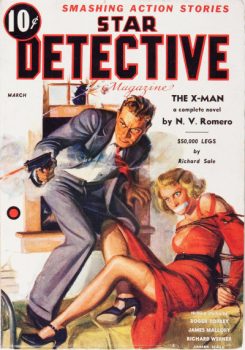 “You’re the second guy I’ve met within hours who seems to think a gat in the hand means a world by the tail.” – Phillip Marlowe in Raymond Chandler’s The Big Sleep
“You’re the second guy I’ve met within hours who seems to think a gat in the hand means a world by the tail.” – Phillip Marlowe in Raymond Chandler’s The Big Sleep
(Gat — Prohibition Era term for a gun. Shortened version of Gatling Gun)
Will Murray has graced this column multiple times, and he has delved into a mystery or two. He’s got another one today, looking into a Pulp byline from the nineteen thirties that has gnawed away at him. And by golly, Will finally had enough! Read on…
____________________________________________
For literally decades, I’ve been intrigued and baffled by the cryptic byline N. V. Romero, which was emblazoned on the front cover of the March, 1937 Star Detective Magazine.
I don’t remember where or when I picked up that old Red Circle pulp magazine. Probably at a collector’s convention somewhere in the 1970s or 80s. It grabbed my attention because the cover-featured lead novel bore the intriguing title,
“The X-Man.”
That’s a coinage I did not think existed prior to Marvel Comics releasing X-Men #1 in 1963. So I grabbed it. I probably paid about five bucks. It was in reasonably good condition. And it was published by Martin Goodman, who later launched Marvel Comics.
This issue is comparatively rare. My copy has the distinction of having been photographed so the cover could appear in Les Daniels’ 1990 book, Marvel, as a weird precursor to The X-Men.
The story Stan Lee always told was that he wanted to call his new comic book about a school for teenaged superheroes, The Mutants. Publisher Goodman objected to the title on the grounds that young readers might not know the term, and Lee claimed to have suggested The X–Men instead. The X stood for extra power.
If that’s true, it’s quite a coincidence that Lee independently coined the term X-Man more than 25 years after Goodman published a cover story by that name. Lee’s memory was not always reliable, and it could be self-serving. It would not shock me if Goodman actually suggested the new title based on his memory of this cover story. Goodman had the reputation of being cover-conscious, believing that covers and titles were the chief elements that sold magazines.
“The X-Man” is the first-person account of Texas special investigator Daniel “Dash” Antonio of the border city of La Plaza District Attorney’s office. It’s a hardboiled story that gets a little metaphysical in spots. In the year of 1937, the G-man was the rising hero in America, and in the pulp magazines. When he was framed for murder, Antonio starts calling himself “the X-Man.“
“I’m on the spot,” he complains. “Instead of being a G-man, I’m an X-man. Dash Antonio, X-Man.”
The novel was credited to N. V. Romero. That byline was unfamiliar to me. So when pulp magazines began to be indexed in depth, and those indexes posted online, I eagerly looked up the name.
It appeared only once in the tens of thousands of pulp magazines that had been indexed and cross-referenced. And that was for the lead novel of the March 1937 issue of Star Detective.
I thought that exceedingly strange. True, inexperienced authors did sell the occasional yarn to pulp magazines, and never appeared again.
There was a self-described “rank amateur” Missouri writer named Vaughn Bryant who sold a story entitled “The Stalking Satan” to Secret Agent X in 1935. He credited the sale to his agent, Lurton Blassingame. The submission ran in the October issue as “The Wailing Skull.”
Bryant apparently only sold that one story––or at least his byline appeared only once in a pulp magazine. Well, it happens that Secret Agent X was a bottom of the barrel market. As was Star Detective Magazine. Fledgling pulpsters more easily broke into the pages of such titles, as opposed to Black Mask. And many who managed one sale never made another.
But the beginners who sold the odd pulp yarn usually wrote short stories. “The X-Man” was a full-length novel. This suggested a seasoned professional.
For years, I puzzled over that unfamiliar name. I often wondered, Was there a clue to Romero’s true identity concealed in his initials? Phonetically, N. V. sounded like “envy.” That was a dead end. The ethic last name was unusual for a pulp magazine, which shunned anything that didn’t sound unequivocally Anglo-Saxon. That, and the one-time use all but ruled out the possibility that it was a house name.
There was one clue. The novel was set in the fictional town of La Plaza, Texas. I reasoned that the author would probably be a Texas native. My initial thoughts ran to Eugene Cunningham of El Paso, Texas, who primarily wrote Westerns, but did other things. But I had no way of tying Cunningham to Romero. I also considered Margie Harris, a Houston native known for writing detective and gangster stories.
Until it occurred to me to jump onto Newspapers.com and punch in that mysterious byline, limiting the search to Texas newspapers.
The first thing that popped up was a letter to the editor of the El Paso Times bylined N. V. Romero. It was dated October 30, 1937.
My researcher’s antennae lifted and quivered.
I had confidently assumed that N. V. Romero was a pseudonym for some prolific pulpster who preferred to conceal his identity because he wrote for the lower-paying Goodman group. Could it be that there was an actual N. V. Romero, and that unusual byline did not in fact mask anybody previously known to the reading public?
Searching further, I found several more letters and a few poems printed the El Paso Times.
It was beginning to seem as if Mr. Romero was nobody other than an unknown author––but also kind of a national non-entity.
One 1933 reference suggested that he worked as a grocer and ran the R. Gomez grocery store in El Paso.
But I had yet to discover absolute proof that this was the nebulous author of The X-Man. I continued scrolling.
Then I came across this gem in the El Paso Times‘ “Around Here” column for March 18, 1937:
AUTHORS DETECTIVE NOVEL.
“It might be interesting to note,” writes M. S. Salcido, “that N. V. Romero, who writes such nice poetry for the Sunday Book Page, has a hard and fast detective novel featured on the cover of the Star Detective Magazine for March.”
Columnist H. S. Hunter added:
“Thanks for the tip. It’s good to know when an El Pasoan comes out with either novel or short story, or accomplishes worthwhile work any other line, for that matter, and this column welcomes a chance to give him a hand.’
There it was––conclusive proof! Mr. Romero was real and he was the actual author of that oddball lead novel.
I was rather chagrined. Decades before, I had written an article on the subject for Comic Book Marketplace where I confidently asserted that N. V. Romero was almost certainly a pseudonym for a hitherto-unidentified pulp author.
It just goes to show that even though one might be considered an expert in the pulp field, it’s dangerous to jump to conclusions.
It’s also a good thing I’m a stubborn and indefatigable researcher. And that I had a subscription to Newspapers.com.
As would be expected of someone who did not go on to literary fame, few facts can be gleaned about this obscure writer.
The author was a lifelong resident of the border town of El Paso, which is the obvious inspiration for La Plaza. A reference to La Plaza’s unnamed sister city across the Rio Grande River points to Juarez, which lies on the other side of the Rio from El Paso.
According to one newspaper notice, in 1931 Romero was admitted to Kalevala, the English Honor Society of the El Paso High School. Out of 76 students who applied, he was one of only 16 admitted. Admission was based on a writing sample. So his inclination toward writing may have started there. Even as a high schooler, he was known as N. V. Romero.
Apparently, Romero never married, or had children. He lived at the same El Paso address for decades. Other than the odd car accident, his name only appeared in print when he wrote a letter or poem for publication in the El Paso Times, which he did periodically, always signing it N. V. Romero.
Popping over to Ancestry.com, I discovered the secret of those mysterious initials. Romero’s 1940 Draft registration card listed his full name as Nicolas Varela Romero, age 25, born March 10, 1915. Under remarks about his fitness to serve was written: “Lame—on crutches.” I assume therefore that the Draft did not take him.
His birthdate means that Romero wrote “The X–Man’ when he was only 20 or 21.
According to Newspapers.com, Mr. Romero died on March 3, 1998 at the age of 82. His past occupations were given as architect, notary public and small business accountant. A 1940s census listed his occupation at the age of 30 as self-employed architect, working for different companies. As far as I’m able to determine, Romero never published another line of fiction in a national magazine for the rest of his days. At least, not under any variation of his real name.…
Bob on Red Circle:
Martin Goodman formed Red Circle Magazines in 1935, and Red Circle cranked out a plethora of low-grade Pulps, including:
All Star Fiction, All Star Adventures, Star Detective, Star Sports, Sports Action, Adventure Trails, Complete Adventures, Complete Western Book, Detective Short Stories, Complete Detective, Complete Sports, Best Sports, Mystery Tales, Top-Notch Western, Top-Notch Detective, Two-Gun Western, Six-Gun Western, Gunsmoke Western, Sky Devils, Western Short Stories, Cowboy Action Novels, Quick-Trigger Western, Modern Love, Wild West Stories & Complete Novel Magazine, Real Sports, Ka-Zar, and Marvel Science Stories.
Star Detective was a Weird Menace Pulp and ran for eleven issues in 1935-1938. It was changed to Uncanny Tales, lasted five more issues and that was the end. But it was a low-end Pulp, never publishing more than three issues in a year and not making any impact, short or long term.
Star did have some notable names, including Hugh B. Cave, L. Ron Hubbard, E. Hoffman Price, Paul Cain, Roger Torrey, and Richard Sale.
2025 (2)
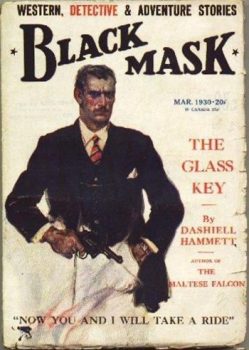 Shelfie – Dashiell Hammett
Shelfie – Dashiell Hammett
Windy City Pulp & Paper Fest – 2025
2024 Series (11)
Will Murray on Dashiell Hammett’s Elusive Glass Key
Ya Gotta Ask – Reprise
Rex Stout’s “The Mother of Invention”
Dime Detective, August, 1941
John D. MacDonald’s “Ring Around the Readhead”
Harboiled Manila – Raoul Whitfield’s Jo Gar
7 Upcoming A (Black) Gat in the Hand Attractions
Paul Cain’s Fast One (my intro)
Dashiell Hammett – The Girl with the Silver Eyes (my intro)
Richard Demming’s Manville Moon
More Thrilling Adventures from REH
Prior Posts in A (Black) Gat in the Hand – 2023 Series (15)
Back Down those Mean Streets in 2023
Will Murray on Hammett Didn’t Write “The Diamond Wager”
Dashiell Hammett – ZigZags of Treachery (my intro)
Ten Pulp Things I Think I Think
Evan Lewis on Cleve Adams
T,T, Flynn’s Mike & Trixie (The ‘Lost Intro’)
John Bullard on REH’s Rough and Ready Clowns of the West – Part I (Breckenridge Elkins)
John Bullard on REH’s Rough and Ready Clowns of the West – Part II
William Patrick Murray on Supernatural Westerns, and Crossing Genres
Erle Stanley Gardner’s ‘Getting Away With Murder (And ‘A Black (Gat)’ turns 100!)
James Reasoner on Robert E. Howard’s Trail Towns of the old West
Frank Schildiner on Solomon Kane
Paul Bishop on The Fists of Robert E. Howard
John Lawrence’s Cass Blue
Dave Hardy on REH’s El Borak
Prior posts in A (Black) Gat in the Hand – 2022 Series (16)
Asimov – Sci Fi Meets the Police Procedural
The Adventures of Christopher London
Weird Menace from Robert E. Howard
Spicy Adventures from Robert E. Howard
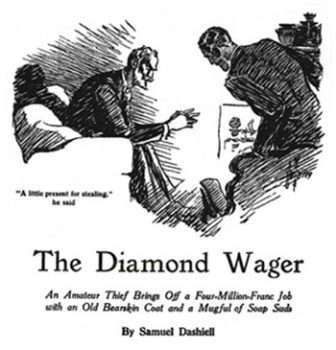 Thrilling Adventures from Robert E. Howard
Thrilling Adventures from Robert E. Howard
Norbert Davis’ “The Gin Monkey”
Tracer Bullet
Shovel’s Painful Predicament
Back Porch Pulp #1
Wally Conger on ‘The Hollywood Troubleshooter Saga’
Arsenic and Old Lace
David Dodge
Glen Cook’s Garrett, PI
John Leslie’s Key West Private Eye
Back Porch Pulp #2
Norbert Davis’ Max Latin
Prior posts in A (Black) Gat in the Hand – 2021 Series (7 )
The Forgotten Black Masker – Norbert Davis
Appaloosa
A (Black) Gat in the Hand is Back!
Black Mask – March, 1932
Three Gun Terry Mack & Carroll John Daly
Bounty Hunters & Bail Bondsmen
Norbert Davis in Black Mask – Volume 1
Prior posts in A (Black) Gat in the Hand – 2020 Series (21)
Hardboiled May on TCM
Some Hardboiled streaming options
Johnny O’Clock (Dick Powell)
Hardboiled June on TCM
Bullets or Ballots (Humphrey Bogart)
Phililp Marlowe – Private Eye (Powers Boothe)
Cool and Lam
All Through the Night (Bogart)
Dick Powell as Yours Truly, Johnny Dollar
Hardboiled July on TCM
YTJD – The Emily Braddock Matter (John Lund)
Richard Diamond – The Betty Moran Case (Dick Powell)
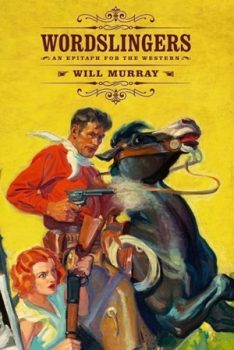 Bold Venture (Bogart & Bacall)
Bold Venture (Bogart & Bacall)
Hardboiled August on TCM
Norbert Davis – ‘Have one on the House’
with Steven H Silver: C.M. Kornbluth’s Pulp
Norbert Davis – ‘Don’t You Cry for Me’
Talking About Philip Marlowe
Steven H Silver Asks you to Name This Movie
Cajun Hardboiled – Dave Robicheaux
More Cool & Lam from Hard Case Crime
A (Black) Gat in the Hand – 2019 Series (15)
Back Deck Pulp Returns
A (Black) Gat in the Hand Returns
Will Murray on Doc Savage
Hugh B. Cave’s Peter Kane
Paul Bishop on Lance Spearman
A Man Called Spade
Hard Boiled Holmes
Duane Spurlock on T.T. Flynn
Andrew Salmon on Montreal Noir
Frank Schildiner on The Bad Guys of Pulp
Steve Scott on John D. MacDonald’s ‘Park Falkner’
William Patrick Murray on The Spider
John D. MacDonald & Mickey Spillane
Norbert Davis goes West(ern)
Bill Crider on The Brass Cupcake
A (Black) Gat in the Hand – 2018 Series (32)
George Harmon Coxe
Raoul Whitfield
Some Hard Boiled Anthologies
Frederick Nebel’s Donahue
Thomas Walsh
Black Mask – January, 1935
Norbert Davis’ Ben Shaley
D.L. Champion’s Rex Sackler
Dime Detective – August, 1939
Back Deck Pulp #1
W.T. Ballard’s Bill Lennox
Erle Stanley Gardner’s The Phantom Crook (Ed Jenkins)
Day Keene
Black Mask – October, 1933
Back Deck Pulp #2
Black Mask – Spring, 2017
Erle Stanley Gardner’s ‘The Shrieking Skeleton’
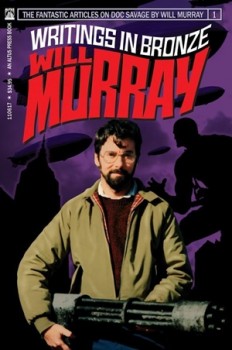 Frank Schildiner’s ‘Max Allen Collins & The Hard Boiled Hero’
Frank Schildiner’s ‘Max Allen Collins & The Hard Boiled Hero’
A (Black) Gat in the Hand: William Campbell Gault
A (Black) Gat in the Hand: More Cool & Lam From Hard Case Crime
MORE Cool & Lam!!!!
Thomas Parker’s ‘They Shoot Horses, Don’t They?’
Joe Bonadonna’s ‘Hardboiled Film Noir’ (Part One)
Joe Bonadonna’s ‘Hardboiled Film Noir’ (Part Two)
William Patrick Maynard’s ‘The Yellow Peril’
Andrew P Salmon’s ‘Frederick C. Davis’
Rory Gallagher’s ‘Continental Op’
Back Deck Pulp #3
Back Deck Pulp #4
Back Deck Pulp #5
Joe ‘Cap’ Shaw on Writing
Back Deck Pulp #6
The Black Mask Dinner
 There are some outstanding names in the ‘New Pulp’ field, but William Patrick Murray’s probably stands above them all. Along with Doc Savage, Will has written Tarzan and The Spider. And he’s quite the Sherlock Holmes writer. Short stories, comic books, radio plays, nonfiction essays and books – Murray has done it all. He created The Unbeatable Squirrel Girl for Marvel Comics, and his collection of essays on Doc Savage, Writings in Bronze, is a must read. I love a good book introduction, and Murray has written some fine ones for Steeger Books. Visit his website Adventures in Bronze.
There are some outstanding names in the ‘New Pulp’ field, but William Patrick Murray’s probably stands above them all. Along with Doc Savage, Will has written Tarzan and The Spider. And he’s quite the Sherlock Holmes writer. Short stories, comic books, radio plays, nonfiction essays and books – Murray has done it all. He created The Unbeatable Squirrel Girl for Marvel Comics, and his collection of essays on Doc Savage, Writings in Bronze, is a must read. I love a good book introduction, and Murray has written some fine ones for Steeger Books. Visit his website Adventures in Bronze.

Bob Byrne’s ‘A (Black) Gat in the Hand’ made its Black Gate debut in 2018 and has returned every summer since.
His ‘The Public Life of Sherlock Holmes’ column ran every Monday morning at Black Gate from March, 2014 through March, 2017. And he irregularly posts on Rex Stout’s gargantuan detective in ‘Nero Wolfe’s Brownstone.’ He is a member of the Praed Street Irregulars and founded www.SolarPons.com (the only website dedicated to the ‘Sherlock Holmes of Praed Street’).
He organized Black Gate’s award-nominated ‘Discovering Robert E. Howard’ series, as well as the award-winning ‘Hither Came Conan’ series. Which is now part of THE Definitive guide to Conan. He also organized 2023’s ‘Talking Tolkien.’
He has contributed stories to The MX Book of New Sherlock Holmes Stories — Parts III, IV, V, VI, XXI, and XXXIII.
He has written introductions for Steeger Books, and appeared in several magazines, including Black Mask, Sherlock Holmes Mystery Magazine, The Strand Magazine, and Sherlock Magazine.
You can definitely ‘experience the Bobness’ at Jason Waltz’s ’24? in 42′ podcast.
Review: A Song of Legends Lost by M.H. Ayinde

Buy A Song of Legends Lost
FORMAT/INFO: A Song of Legends Lost was published in the UK on April 8th, 2025, and will be published in the US on June 3rd, 2025. It is 592 pages long and available in paperback, ebook, and audiobook.
OVERVIEW/ANALYSIS: Everyone knows that only those of noble blood can invoke the ancestors, can call their spirits back to the mortal plane to fight in the wars against the greybloods. Or at least, that's what everyone thinks. But when a young woman in the slums summons a spirit, it sets off a chain reaction of events that will shift the Nine Lands forever. As families fight to determine the fate of the kingdom, one little detail slips through the cracks: not every spirit summoned is an ancestor.
A Song of Legends Lost is a truly unique science-fantasy story that will engross you as it keeps you guessing. It will be tempting for many of you to start this story and within a few chapters proclaim, "I know what's going on!" I certainly did that and I'm here to assure you that, like me, you will be wrong. This blend of magic and technology still has me (pleasantly) confused as to how it all ties together, as we only get a peek behind the curtain by the end of this first book.
The story immediately jumps into some bad situations with multiple characters, plunging you into the middle of things as you meet them. While a few POV characters stay the length of the book, some only stick around for chunks at a time, with the cast of POV characters changing as the story switches from Part 2 to Part 3, etc. This gives us a fairly wide view of the events that are playing out across the kingdom. The author does a good job overall of investing you in the characters, but given how much you jump around, I did occasionally find myself emotionally distanced from some characters more than others.
This is also a story that is working on two levels. On the surface you have the very real, sometimes deadly, political posturing between the monarchy, the powerful religious monks, and the noble families. But there is also a whole second layer of characters pulling strings for completely different reasons. To most, this is about protecting their power and protecting the Nine Lands from the dangerous graybloods. But to others, these power struggles are masking a completely different game. We don't know fully what's going on by the end of things, just that we are still in the dark about quite a lot.
That's where this story may be a bit frustrating for some. We only have a tantalizing glimpse of what's truly going on, with much mystery still to be unpacked in the subsequent sequels. Personally, there is plenty of adventure and growth to be found just in this book alone, but I did plead a little bit at the end to please give me just a liiiittle more detail of what's really going on? Please?
CONCLUSION: But in the end, that's while I'll be back for the sequel to A Song of Legends Lost. The author is clearly just getting started and I am ready to go along for the ride (especially after one especially juicy POV in the epilogue). If you're looking for something fresh and original to dive into, I wholly recommend checking out this story.
Damien Broderick, April 22, 1944 – April 19, 2025
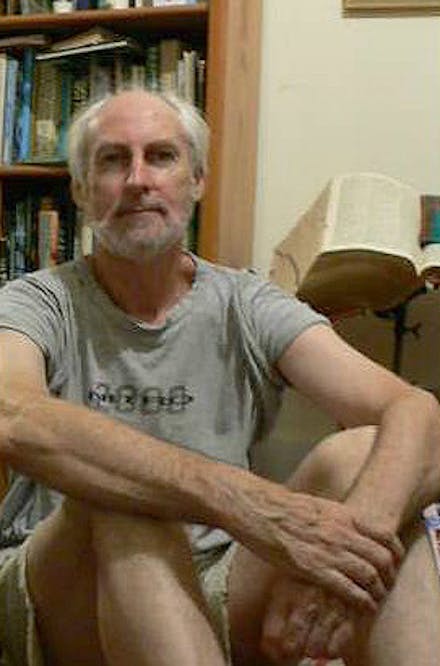 Damien Broderick
Damien Broderick
Australian writer, editor, and critic Damien Broderick has died, April 19, 2025, just a few days short of his 81st birthday. He died peacefully in his sleep after a long illness. He is survived by his wife and occasional collaborator Barbara Lamar.
I had known Damien quite well online for decades, including interactions in newsgroups and on mailing lists as well as personal correspondence. We met only once, at the World Fantasy Convention in 2017, in San Antonio, TX, where Damien lived at that time; and we had a nice if brief conversation. Damien was showing signs of physical frailty at the time but was still mentally sharp. I had the honor of writing the foreword to his 2012 collection Adrift in the Noösphere, and to reprint a couple of his excellent short stories.
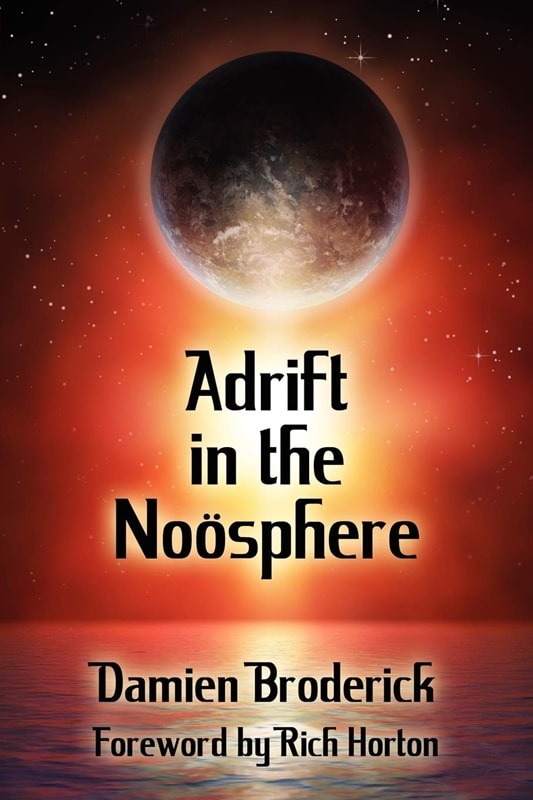
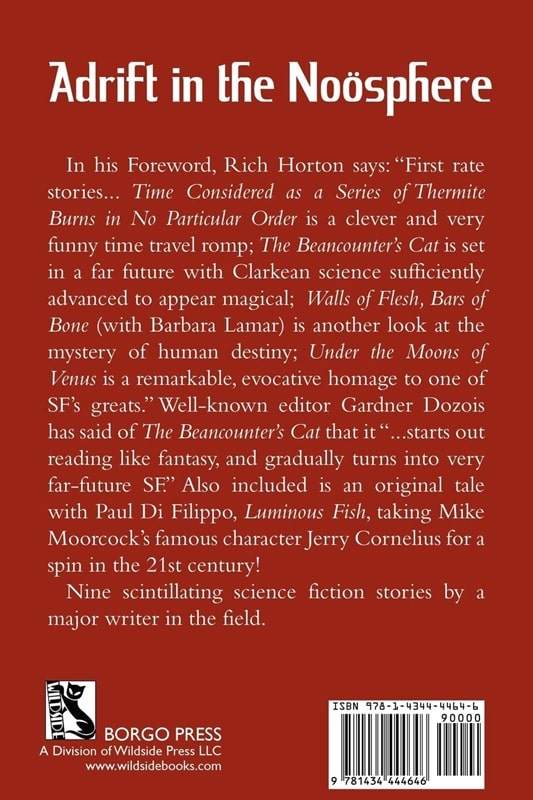
Adrift in the Noösphere (Borgo Press, April 2012)
Damien Broderick was born April 22, 1944, in Melbourne, Australia. He began publishing at the age of 20 with “The Sea’s Furthest End” in the first volume of John Carnell’s original anthology series New Writings in SF.
His first novel, Sorcerer’s World, appeared in 1970 but didn’t gain much notice. (Perhaps deservedly so – I found it less than successful myself and Damien once admitted to me that he regretted some fairly juvenile tricks he played in the novel – he extensively revised it in 1985 as The Black Grail.)
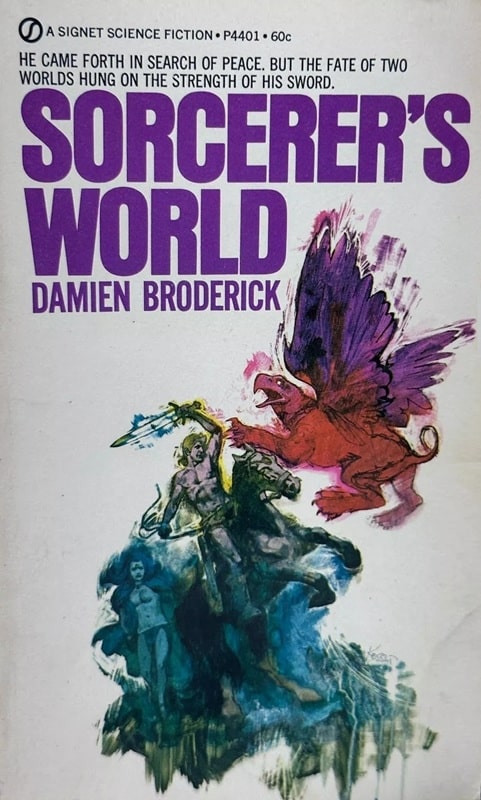
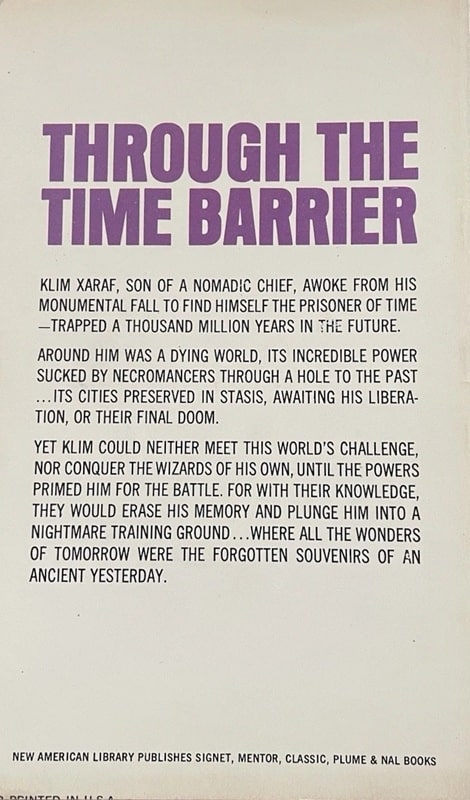

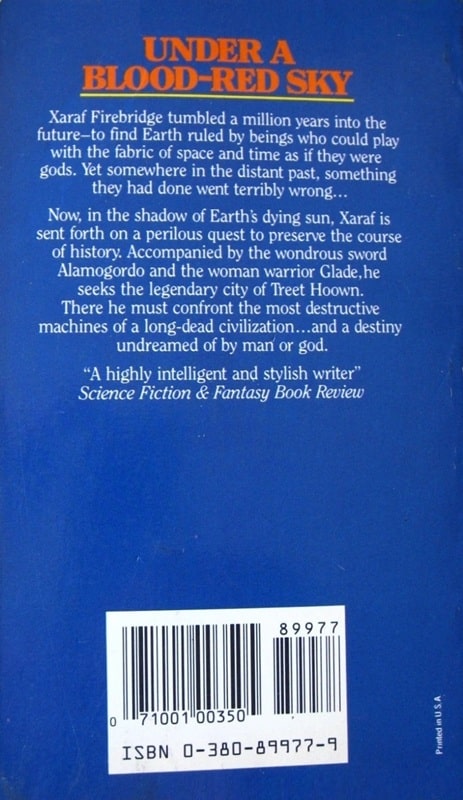
Sorcerer’s World (Signet, October 1970) and The Black Grail
(Avon, September 1986). Covers by Sanford Kossin and Luis Royo
Indeed, Broderick was fond of radically reworking and improving his stories – he revised his first story, “The Sea’s Furthest End,” twice; and also revised The Dreaming Dragons, which won a Ditmar on its first appearance in 1980, as The Dreaming in 2001.
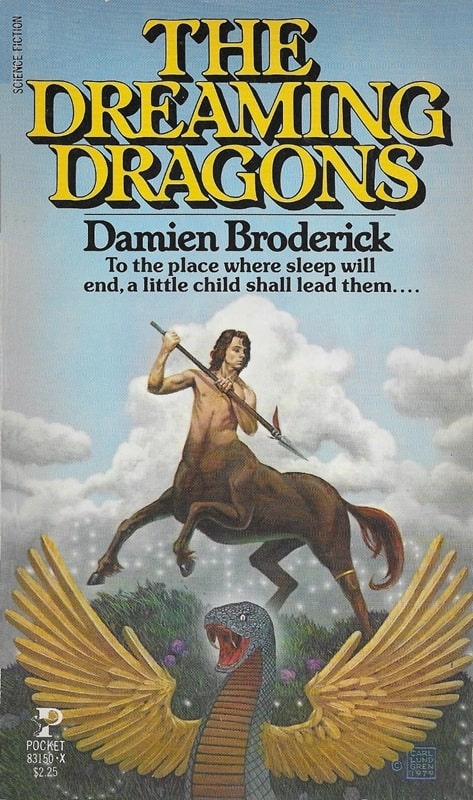
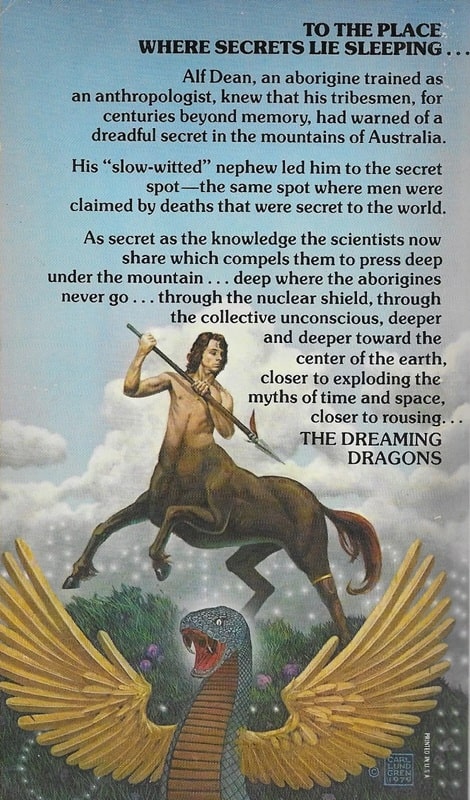


The Dreaming Dragons (Pocket Books, November 1980) and The Judas Mandala
(Timescape, October 1982). Covers by Carl Lundgren, uncredited
Broderick began to gain wider notice with The Dreaming Dragons, and subsequent novels including The Judas Mandala (1982), The White Abacus (1997), and the impressive diptych comprising Godplayers (2005) and K-Machines (2006) earned him much praise, and eventually four Ditmar awards and three Aurealis awards (the two most prominent Australian SF awards.) He was granted the A. Bertram Chandler Award for Outstanding Achievement in Australian Science Fiction in 2010.
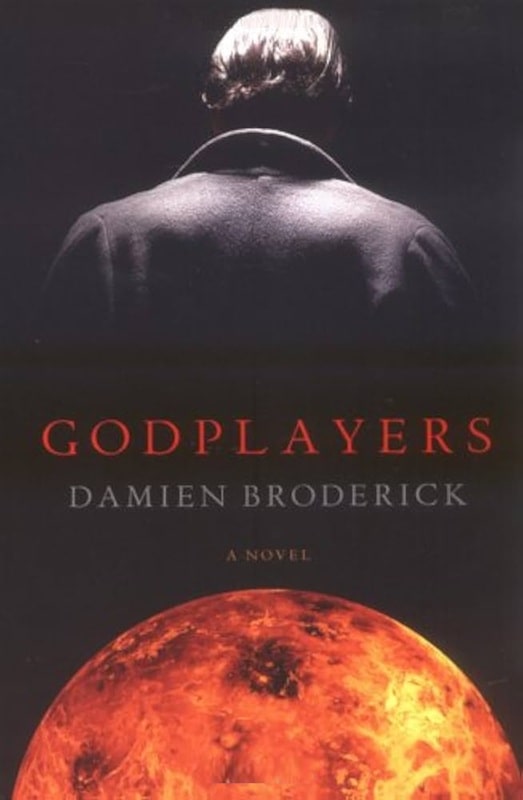
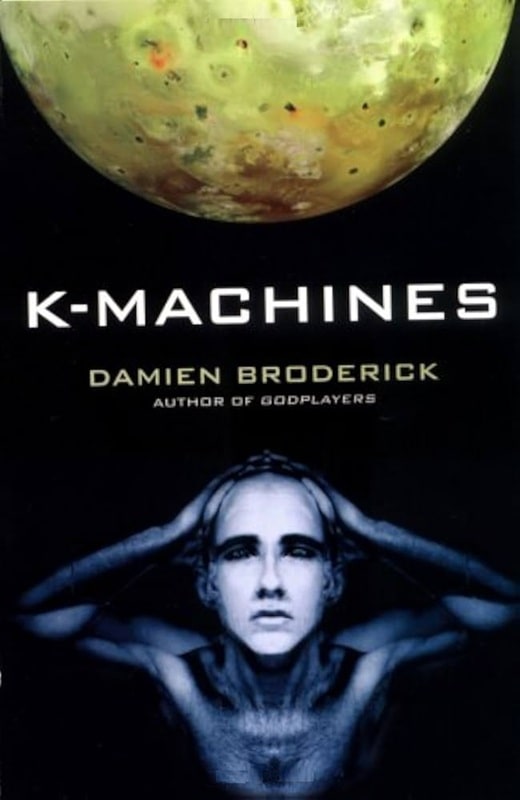
Godplayers and K-Machines (Thunder’s Mouth Press,
May 2005 and March 2006). Covers by David Riedy
He also collaborated on a number of novels with Rory Barnes, not all of which were SF – I was impressed by a rather madcap contemporary crime novel called I’m Dying Here (2009) – and with Barbara Lamar he wrote Post Mortal Syndrome (2011). His final “collaborations” were two novels rather radically revising early works by the late John Brunner: Threshold of Eternity (2017) and Kingdom of the Worlds (2021).
Broderick was also a first-rate writer of short fiction. I was profoundly impressed by “The Ballad of Bowsprit Bear’s-Stead (1980) and “The Magi” (1982), and then by a sequence of remarkable work in the 21st century, with several of these stories pastiches of major earlier SF work. The best of this late flowering are “Under the Moons of Venus,” “This Wind Blowing, and This Tide,” “The Qualia Engine,” and “The Beancounter’s Cat”; and in my view Broderick’s late short fiction deserves a closer look.
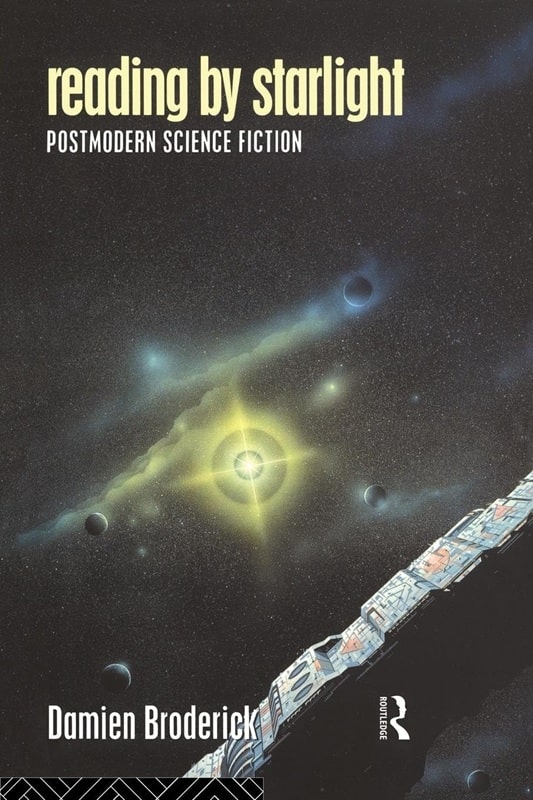
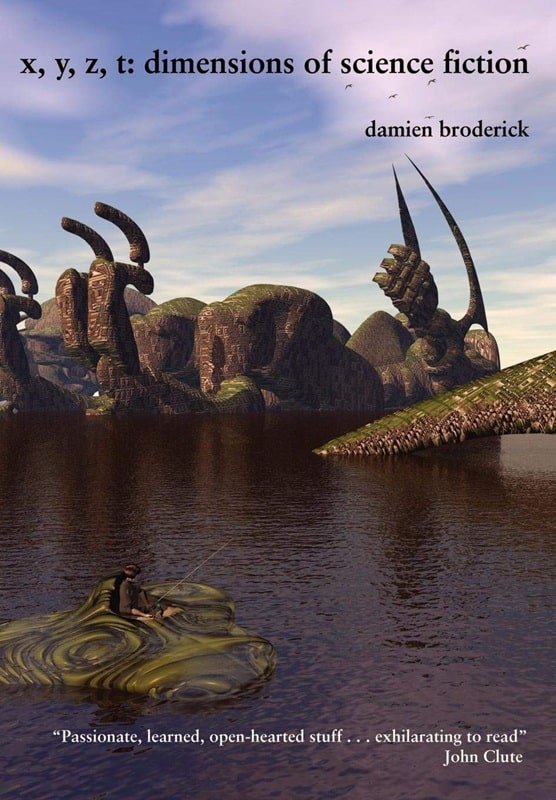
Reading by Starlight: Postmodern Science Fiction (Routledge, 1995) and
X, Y, Z, T: Dimensions of Science Fiction (Borgo Press, January 2004).
Covers by Alan Craddock and Anders Sandberg
He has also written extensively in SF criticism, and in speculative science. Major critical works include Reading by Starlight: Postmodern Science Fiction (1995); Transrealist Fiction: Writing in the Slipstream of Science (2000); and X, Y, Z, T: Dimensions of Science Fiction (2004); as well as, with John Boston, a series of books detailing the history of John Carnell’s seminal UK magazines New Worlds and Science Fantasy issue by issue.
His science books include most notably The Lotto Effect: Towards a Technology of the Paranormal (1992); The Spike: Accelerating into the Unimaginable Future (1997); and Ferocious Minds: Polymathy and the new Enlightenment (2005).
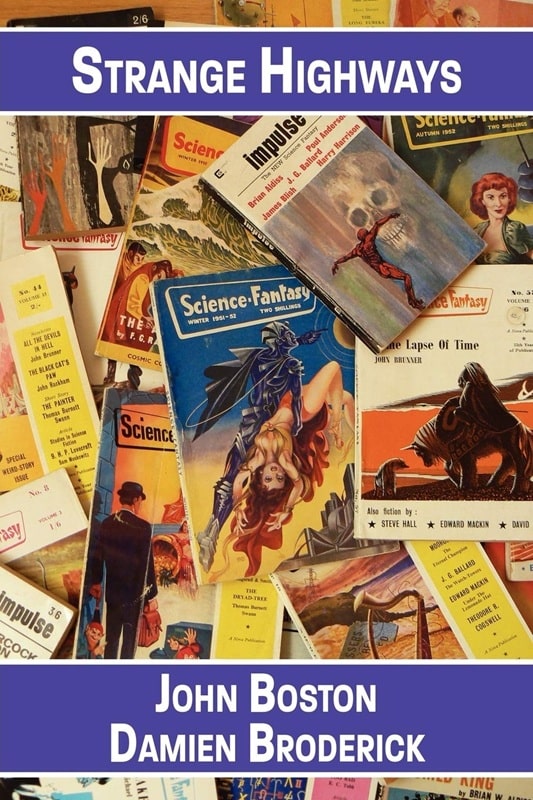
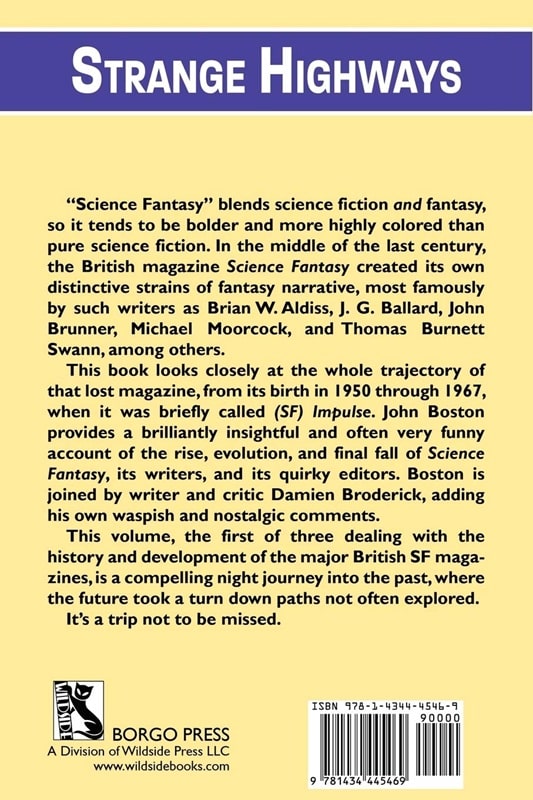
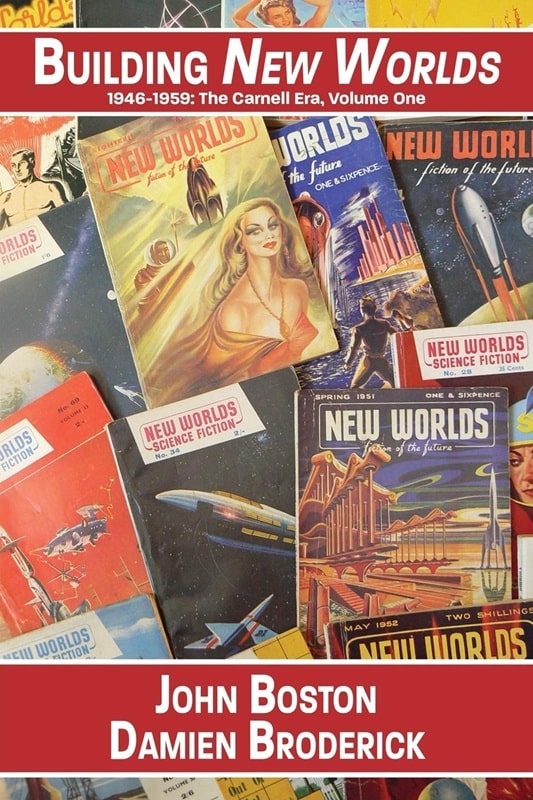
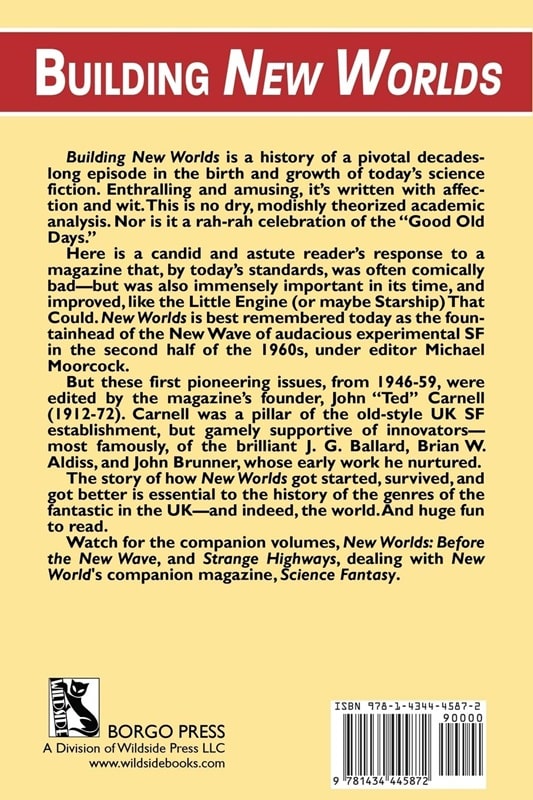
Strange Highways: Reading Science Fantasy, 1950-1967 and Building New Worlds,
1946-1959: The Carnell Era, Volume One (Borgo Press, January 3 and January 29, 2013)
He made contributions as fiction editor of the Australian science magazine Cosmos, and as a prolific anthologist. His anthologies include The Zeitgeist Machine (1977), Earth is But a Star (2001), and, with David Harwell, Centaurus: The Best of Australian Science Fiction (1999).
Damien Broderick was an outstanding science fiction writer – and, to my mind, a somewhat underappreciated one. He was a tireless advocate of Australian SF, in both his anthologies and his critical work. He was an intriguing and rather iconoclastic science writer, very interested in the far future and in very speculative scientific ideas, including paranormal powers. His scientific interests, not surprisingly, also inform his science fiction, much to its benefit (in the The Judas Mandala he seems to have coined the term “Virtual Reality.”)
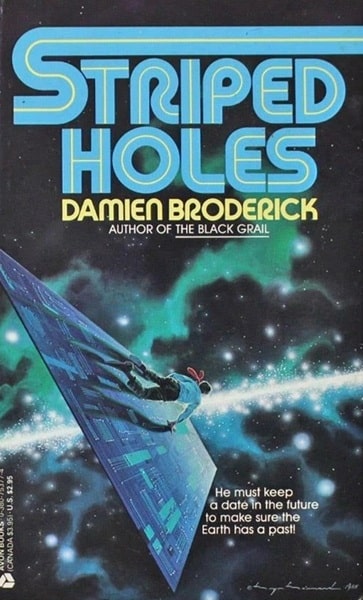
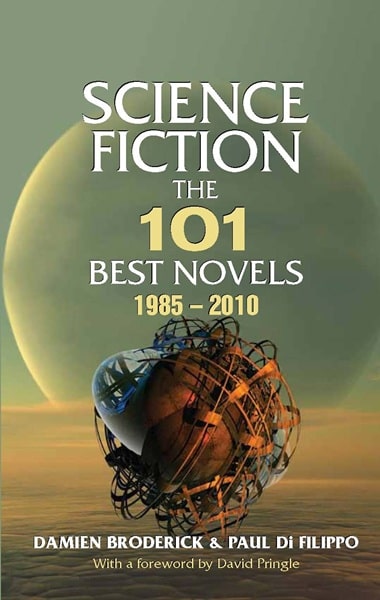
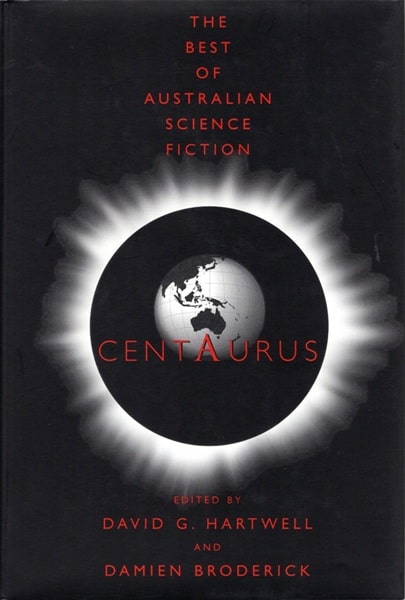
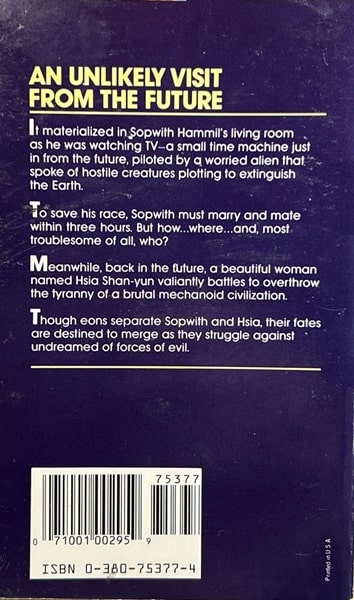
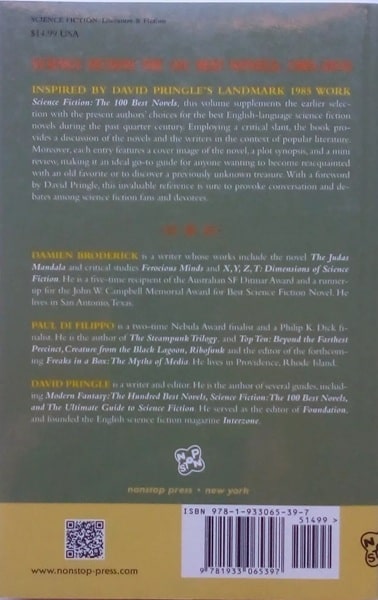
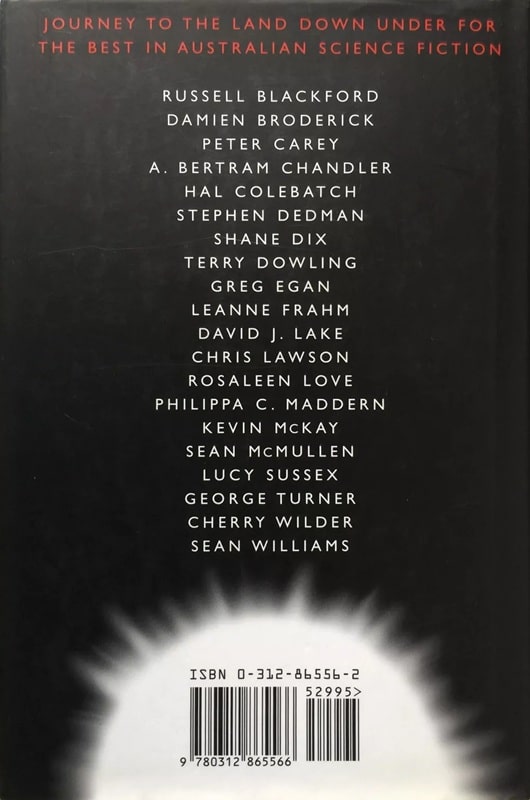
Striped Holes (Avon, November 1988), Science Fiction: The 101 Best Novels 1985-2010,
with Paul Di Filippo (Nonstop Press, 2012), and Centaurus: The Best of Australian Science Fiction,
with David G. Hartwell (Tor, July 1999). Covers by Bryn Barnard, Luis Ortiz, and Peter Lutjen
His range was broad – he wrote fantasy and crime fiction as well as SF, and his fiction could be very funny as well as very dark, sometimes at the same time. I was privileged to know him as well as I did, and I will miss him.
Rich Horton’s last article for us was a Retro-Review of the August 1961 issue of Fantastic magazine. His website is Strange at Ecbatan. Rich has written over 200 articles for Black Gate, see them all here.
Women in SF&F Month: Week 4 Schedule & Week in Review
The fourth week of Women in SF&F Month starts tomorrow, with four new guest posts and a book giveaway coming up this week. Thank you so much to last week’s guests for their fantastic essays! Before announcing the schedule, here are last week’s guest posts in case you missed any of them. All guest posts from April 2025 can be found here, and last week’s guest posts were: “The Long and the Short of It” — A. G. Slatter (The […]
The post Women in SF&F Month: Week 4 Schedule & Week in Review first appeared on Fantasy Cafe.Book Review: Cold Eternity by S.A. Barnes
I received a review copy from the publisher. This does not affect the contents of my review and all opinions are my own.
Mogsy’s Rating: 3.5 of 5 stars
Genre: Science Fiction, Horror
Series: Stand Alone
Publisher: Nightfire | Macmillan Audio (April 8, 2025)
Length: 293 pages | 9 hrs and 38 mins
Author Information: Website
There’s just something irresistible about a haunted-in-space story, which is probably why I always come back to S.A. Barnes. While none of her books have quite crossed that line into “phenomenal” territory for me, I can always count on her to deliver a reliably solid and entertaining experience.
In Barnes’ newest novel Cold Eternity, the premise is immediately intriguing. The story follows Halley Zwick, though she’s been known by multiple names. A woman with a complicated past trying to outrun her overbearing family and a political scandal, she is forced to accept a shady, criminally low paying job just to stay under the radar. The role itself is easy enough, requiring Halley to press a button every few hours and do some rounds. However, it is situated aboard a derelict barge in space known as the Elysian Fields. Originally built to preserve the cryogenically frozen bodies of the rich and powerful with a hope that future medical advancements will allow or their revival, the ship was even repurposed to be a museum for a time but is now nothing but a decaying relic left floating in the void.
Right away, Halley is warned by her mysterious and insufferable boss Karl that she will be expected to perform her duties independently, and that there are areas of the ship that are absolutely off-limits. Preferring to work alone anyway, Halley takes no issue with following his instructions—until strange things start happening on Elysian Fields that go beyond the typical quirks of an aging, crumbling ship. Unexplained noises echo through the emptiness, and Halley thinks she catches sight of someone or something in the shadowed corridors—even though, as far as she knows, the only living souls aboard are Karl and herself, with everyone else locked away forever in cryogenic sleep.
Following in the footsteps of her previous novels Dead Silence and Ghost Station, the author returns with another tense, atmospheric thriller that leans hard into the themes of isolation, paranoia, and rogue technology. Once more, Cold Eternity is packed with unsettling imagery and claustrophobic scenarios which add to the mounting dread. One of Barnes’ greatest strengths lies in her ability to craft eerie, immersive scenarios that have an almost cinematic quality to them. In fact, as someone who recently watched the latest Alien movie Romulus, I could help but draw some inevitable parallels, from the derelict spaceship setting to the glimpses of horrifying monsters lurking in the dark.
Still, although the book had plenty to keep me turning the pages, there were a handful of reasons that kept it from being truly memorable. For one, the pacing felt uneven, with the story taking its sweet time unraveling the central mystery. Without revealing too many spoilers, onboard the Elysian Fields is a cryogenically frozen individual whose memory has been preserved, and with whom Halley has a history. However, this relationship is never explored to my satisfaction, remaining largely surface-level. Similarly, hints about Halley’s troubled past are scattered throughout the book but are mostly withheld until the final stretch, when all is revealed in one big dump. While I typically appreciate a good slow burn when it’s building toward something impactful, here the narrative felt less like a careful calculation and more like stalling.
Another thing that tripped me up was some of the repetitiveness in the plot. The cycle of Halley’s routine which amounted to making rounds, hearing strange noises or seeing strange things, then questioning her sanity became a bit of a slog. I get that readers are supposed to sympathize with the protagonist’s growing paranoia and exhaustion, but the way it was handled made large portions of the novel’s middle section feel unnecessary or redundant. I found myself wishing for more variety in the horror and thrills, or at least some deeper insights into the ship’s macabre history during some of the quieter stretches.
But overall, did I enjoy the book? The answer is yes, which is the most important part. Although not flawless, Cold Eternity is undeniably entertaining and has its fair share of spooky moments. I certainly ate it up in a very short amount of time. Like I said, even though the story is unlikely to stay with me for long, I knew I could count on it for a fun, solid read.
![]()
![]()

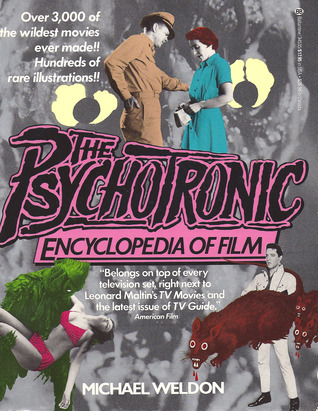
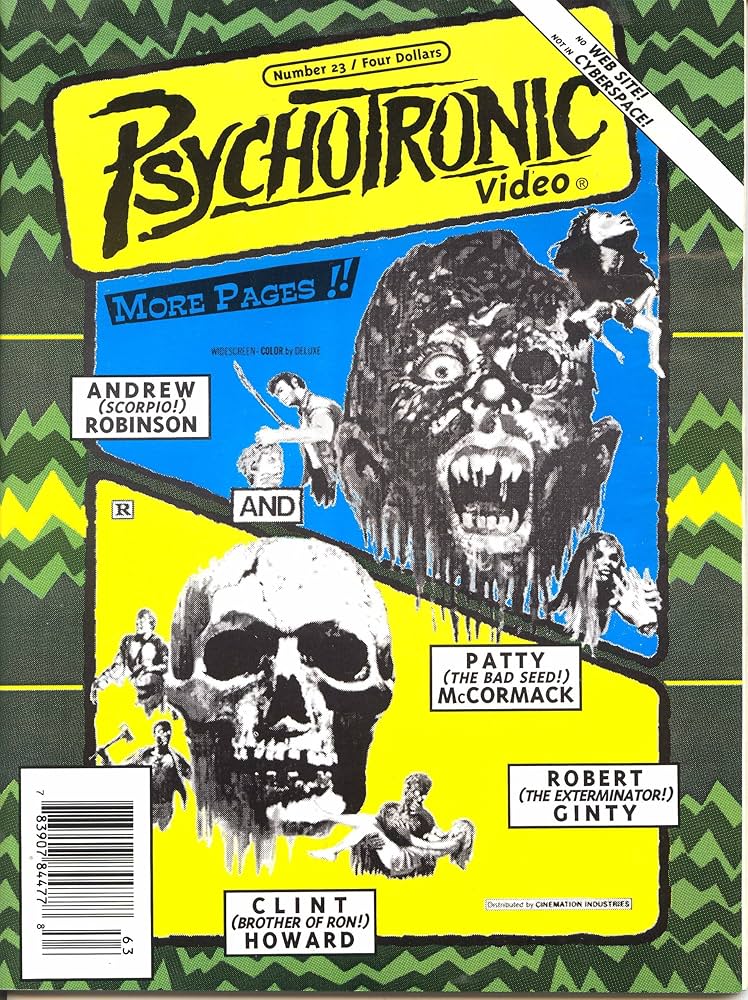
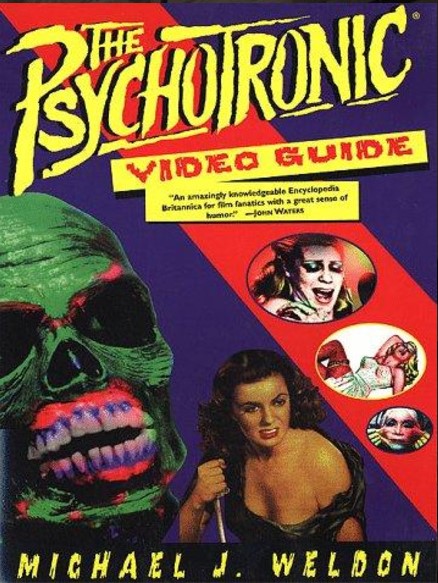
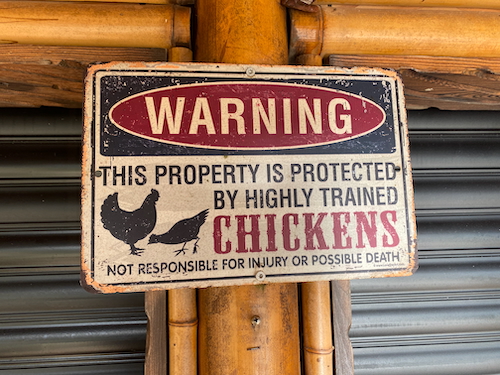
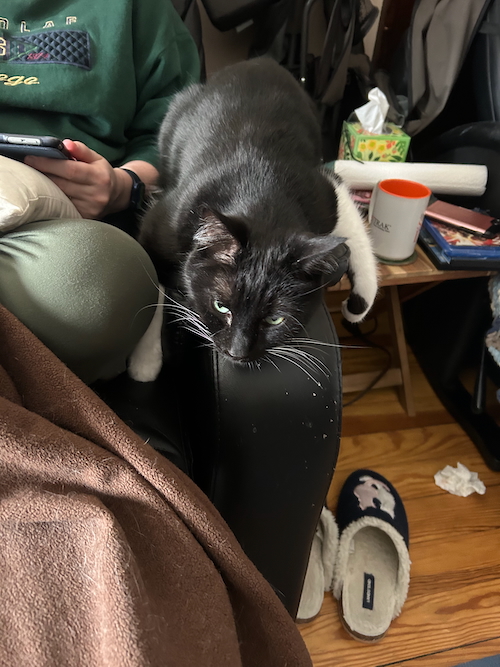
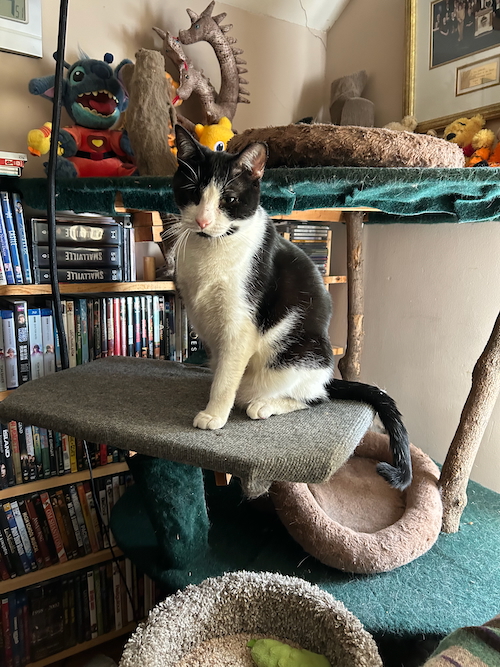

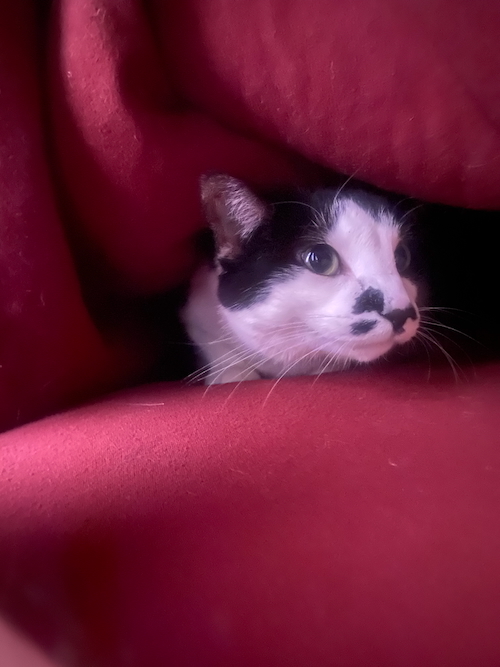
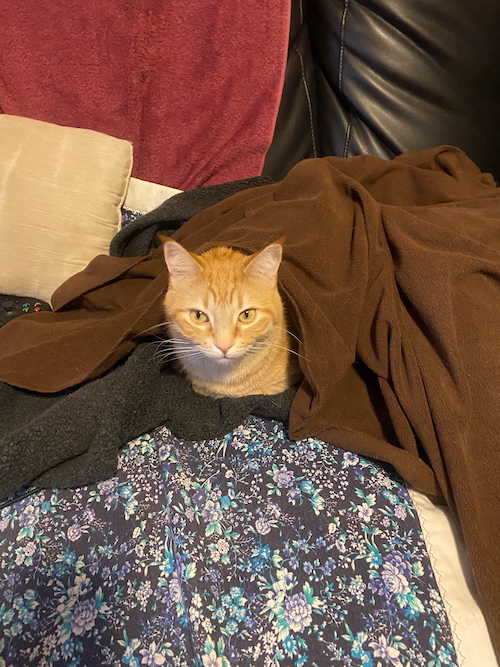
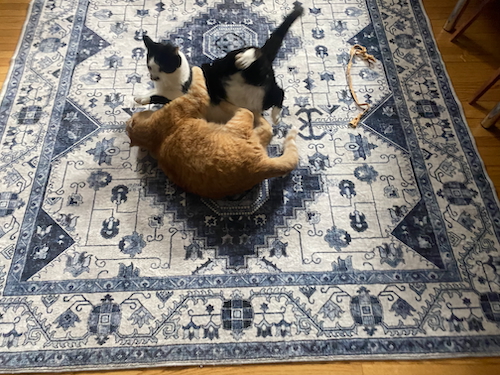

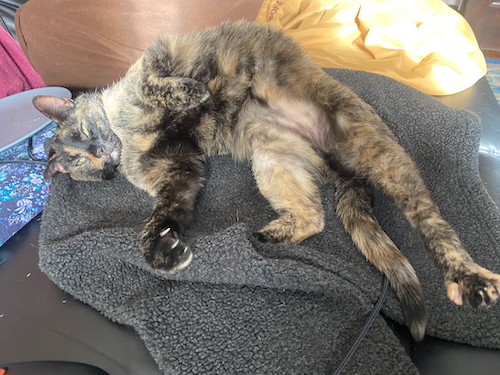

Recent comments